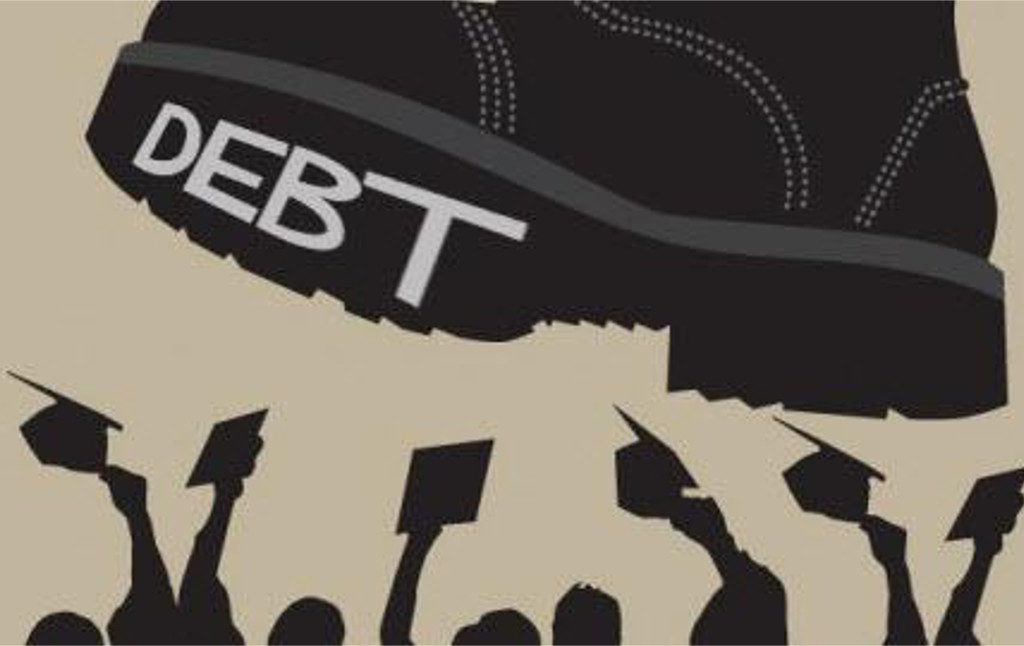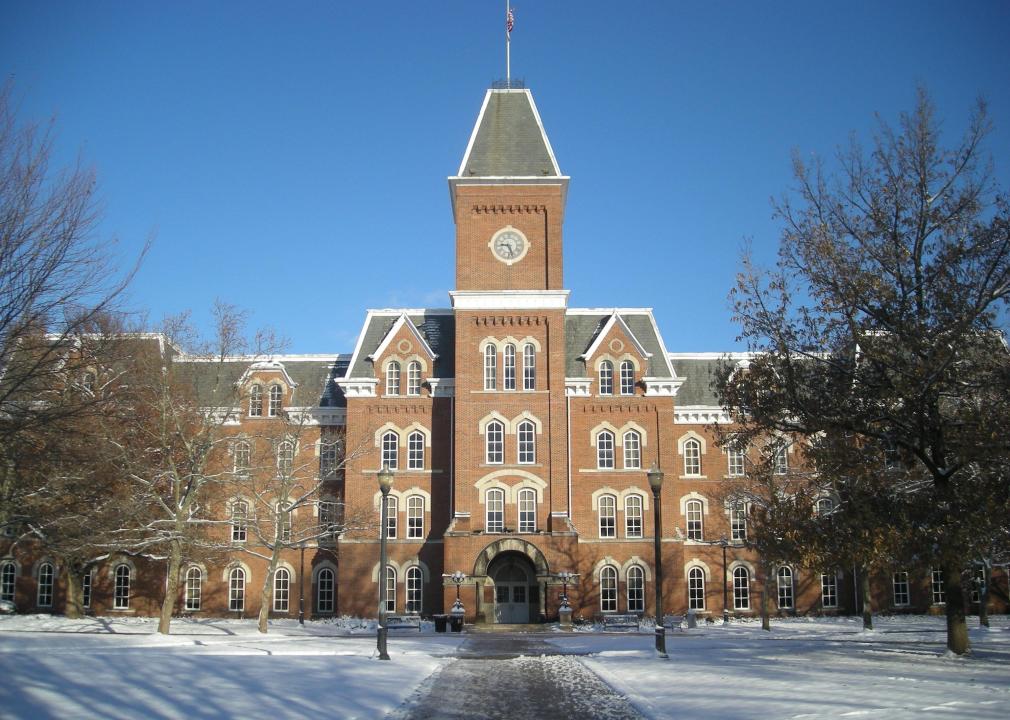
Michael Barera // Wikimedia Commons
States with the most and least student debt
In the late 1980s, a high school graduate who wanted to attend college or university was looking at average tuition of $15,160 per year for a private, nonprofit school and $3,190 per year for a public college or university. As of 2021, that number had ballooned to $37,600 for private, nonprofit colleges and $9,400 for public schools. Once the cost of books, room and board, and other fees are added in, paying for college with a part-time or summer job is increasingly becoming a thing of the past.
Today’s students are instead turning to loans, leading to a widespread debt crisis. Americans currently owe a collective $1.58 trillion in student loans, changing the shape and trajectory of the U.S. economy. Instead of buying cars or houses, many millennials are focused on finding jobs that will enable them to make loan payments without defaulting.
Some states are taking steps to help by adopting a Student Borrower Bill of Rights and offering a variety of scholarship and loan repayment programs for qualified graduates. In New York in 2017, for example, New York announced a scholarship program that would provide free tuition at public colleges to residents whose families make less than $125,000 a year.
Stacker looked at 2022 data from the Federal Reserve of New York to determine where student debt is hitting the nation the hardest. In the case of a tie, we looked at the number of borrowers in all tied states.
Read on to see where your state falls on the list.
You may also like: Highest-paying management jobs
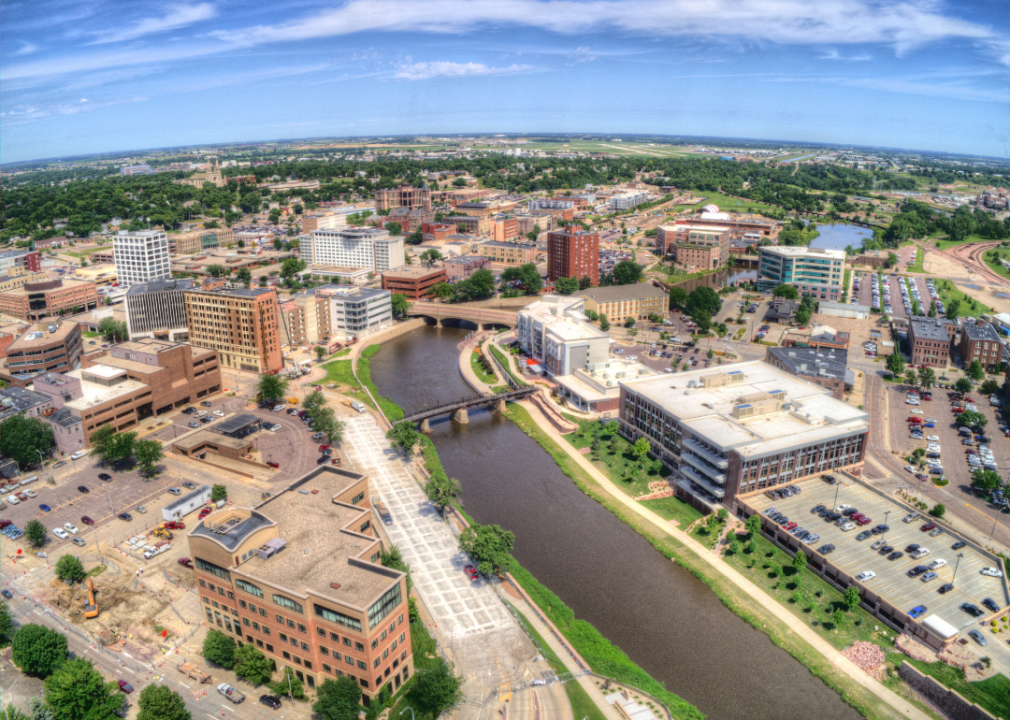
Jacob Boomsma // Shutterstock
#51. South Dakota
– Number of borrowers: 135,600
– Average loan balance per borrower: $28,218
South Dakota participates in the Teacher Loan Forgiveness Program, while the Dakota Corps Scholarship aims to help students in the state.
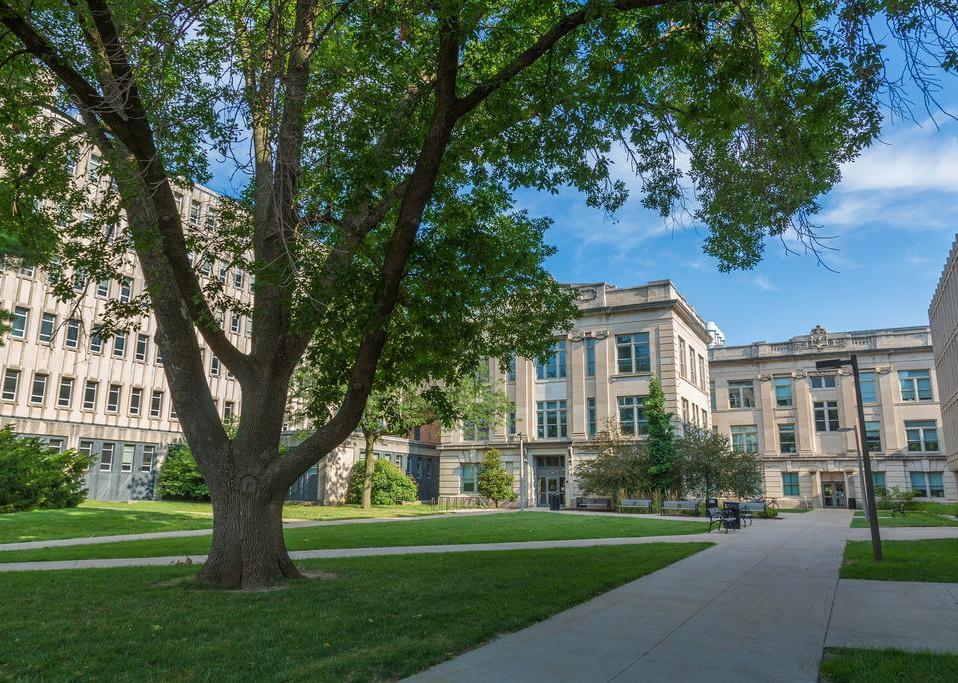
Tony Webster // Flickr
#50. Iowa
– Number of borrowers: 465,500
– Average loan balance per borrower: $29,845
Iowa has a number of student loan forgiveness programs, including programs for teachers, nurses, doctors, physician assistants, and other health care providers.
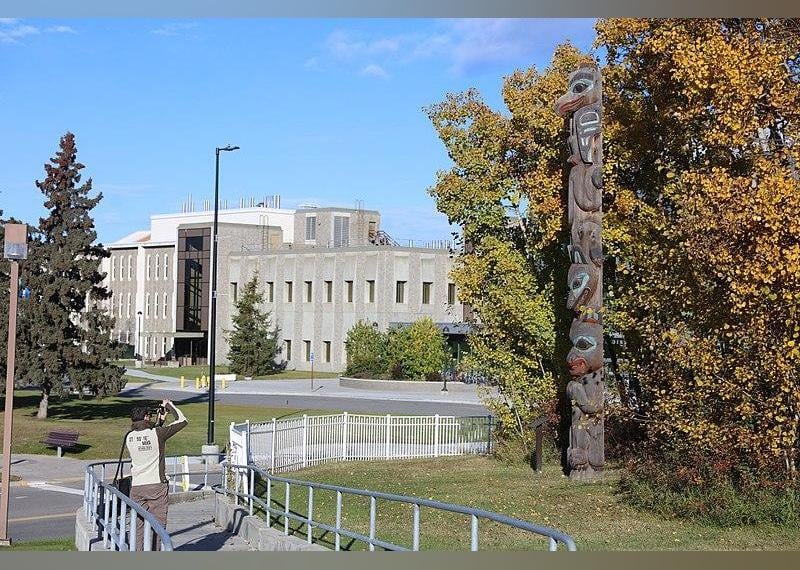
Enrico Blasutto // Wikimedia Commons
#49. Alaska
– Number of borrowers: 70,600
– Average loan balance per borrower: $30,427
Alaska offers a loan repayment program for health care workers who will live and work in areas with a shortage of medical, dental, and behavioral health professionals. The state is among those with the lowest proportion of students with debt, according to WalletHub.
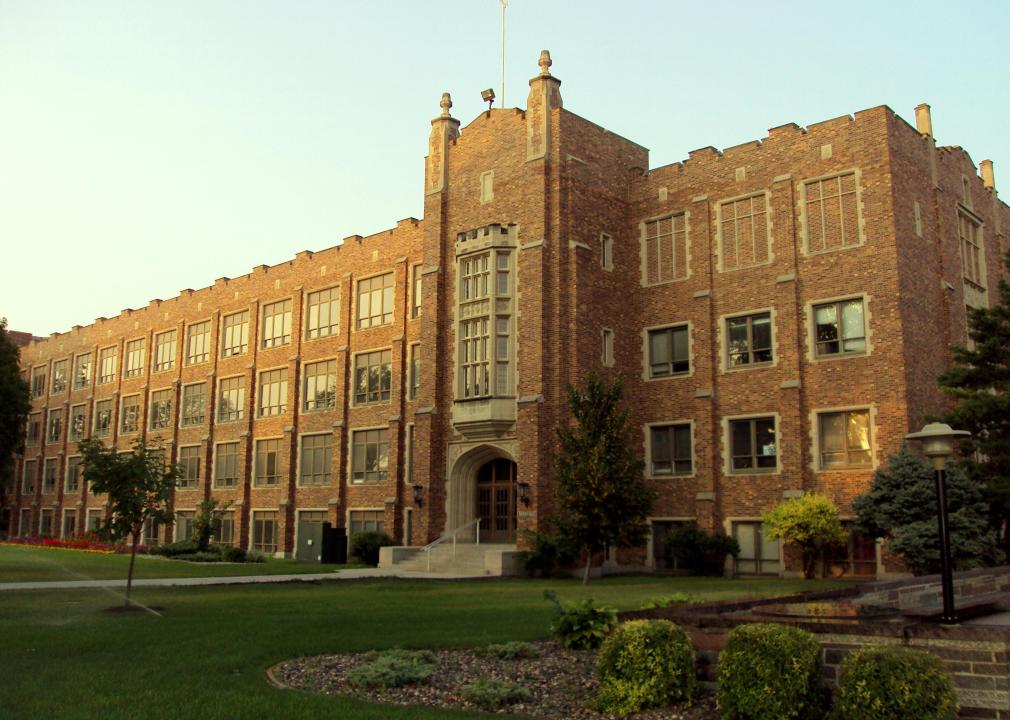
MatthewUND // Wikimedia Commons
#48. North Dakota
– Number of borrowers: 114,100
– Average loan balance per borrower: $30,542
Veterinarians can qualify for loan forgiveness in North Dakota if they will serve in high-need areas. Three are chosen each year, with the goal of attracting new veterinarians for animals raised for meat.
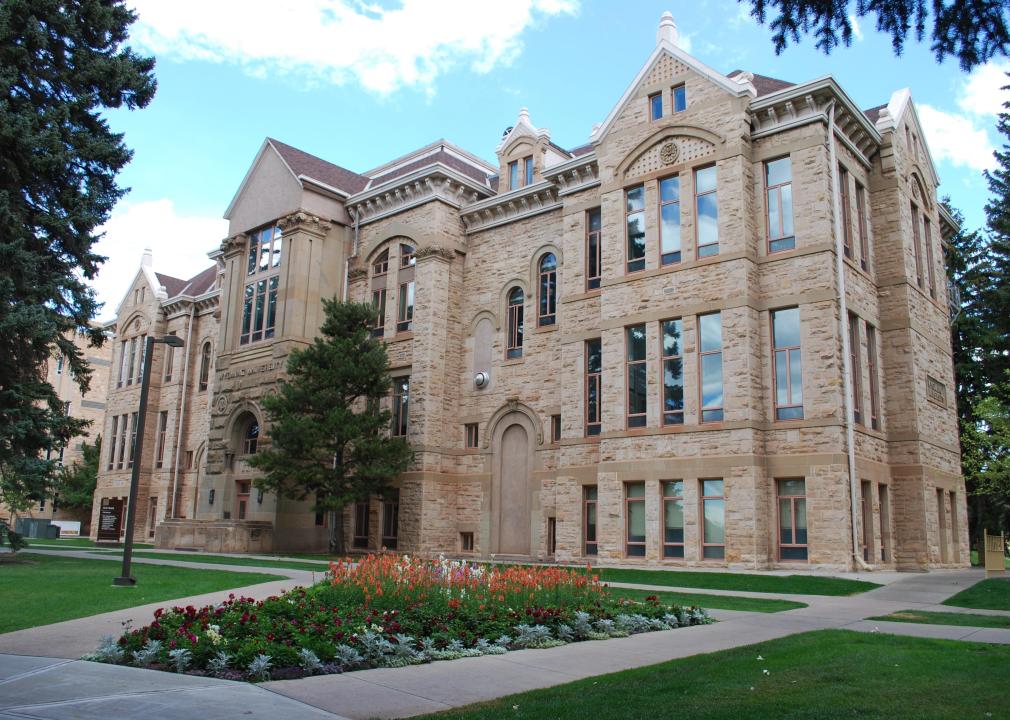
Thecoldmidwest // Wikimedia Commons
#47. Wyoming
– Number of borrowers: 57,600
– Average loan balance per borrower: $30,581
Wyoming’s Hathaway Scholarship, created in 2005 with a $400 million permanent endowment, pays for qualified high school graduates to attend the University of Wyoming or any of the state’s seven community colleges. The Wyoming Healthcare Professional Loan Repayment Program repays health professionals’ educational loans if they practice in an underserved area for at least three years.

Ron Cogswell // Flickr
#46. Wisconsin
– Number of borrowers: 785,600
– Average loan balance per borrower: $31,482
In 2020, Wisconsin’s governor created a task force to look for ways to reduce student debt in the state. The loans disproportionately affect low-income and first-generation college students, students of color, women, and veterans, according to the governor.
You may also like: 50 best public colleges ranked from least to most expensive
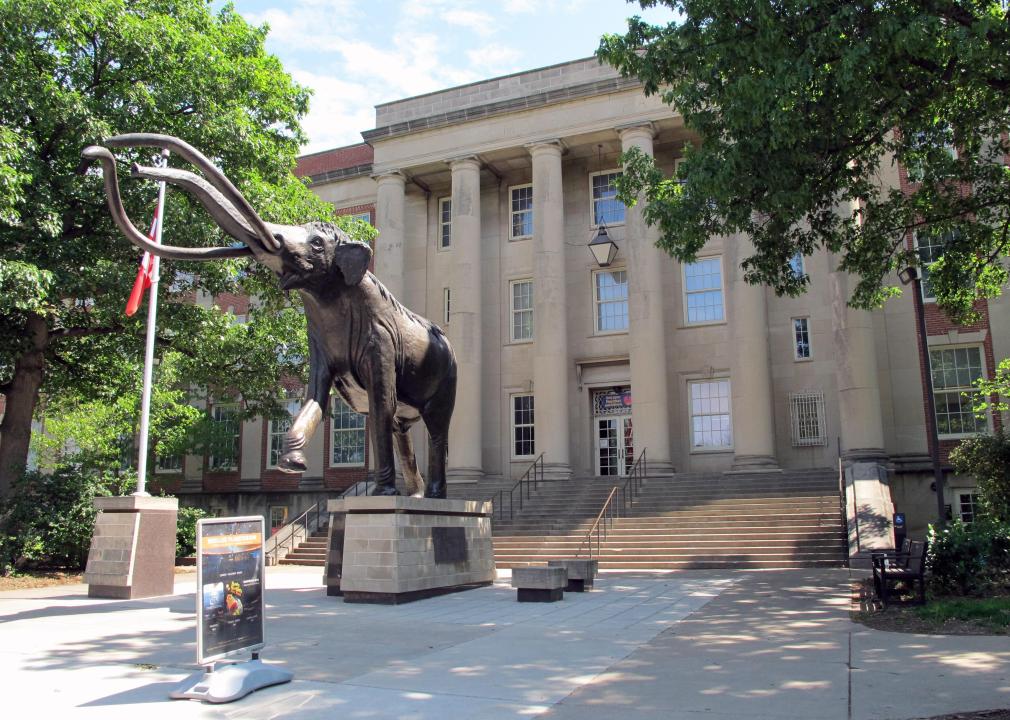
Hanyou23 // Wikimedia Commons
#45. Nebraska
– Number of borrowers: 261,000
– Average loan balance per borrower: $31,551
Primary care doctors, dentists, and other medical professionals are eligible for loan repayment awards in Nebraska if they practice in areas where there are shortages.
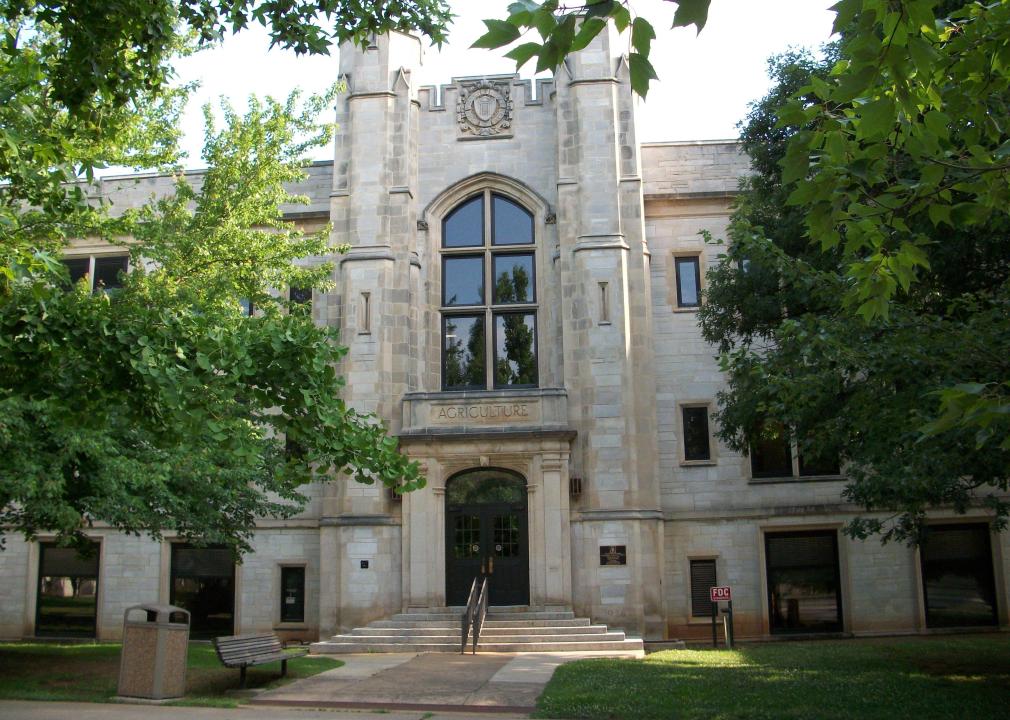
Brandonrush // Wikimedia Commons
#44. Arkansas
– Number of borrowers: 374,900
– Average loan balance per borrower: $31,851
After Arkansas began a default management program in 2013, students’ default rates fell almost every year. From 2013 to 2018, Arkansas’ default rate dropped 7.8 percentage points, compared to the national rate, which fell 3.9 percentage points. By the end of 2021, the state’s delinquency rate was 9%.
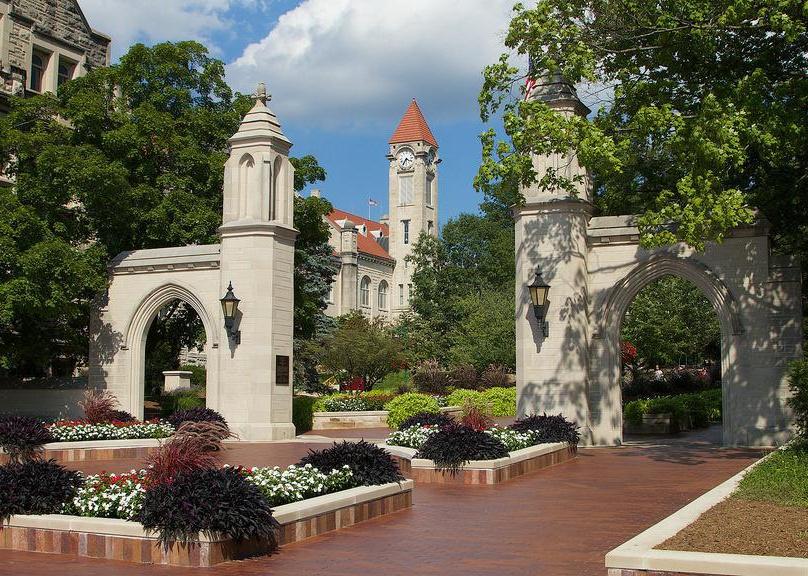
IT Communications Office // Flickr
#43. Indiana
– Number of borrowers: 924,000
– Average loan balance per borrower: $32,045
Indiana provides student loan relief for lawyers working in legal aid through its Richard M. Givan Loan Repayment Assistance program. Another program, Hon. J. Terrence and Peggy Cody Loan Repayment Assistance, provides aid to law school graduates working in child services. Legal scholarships are also available.
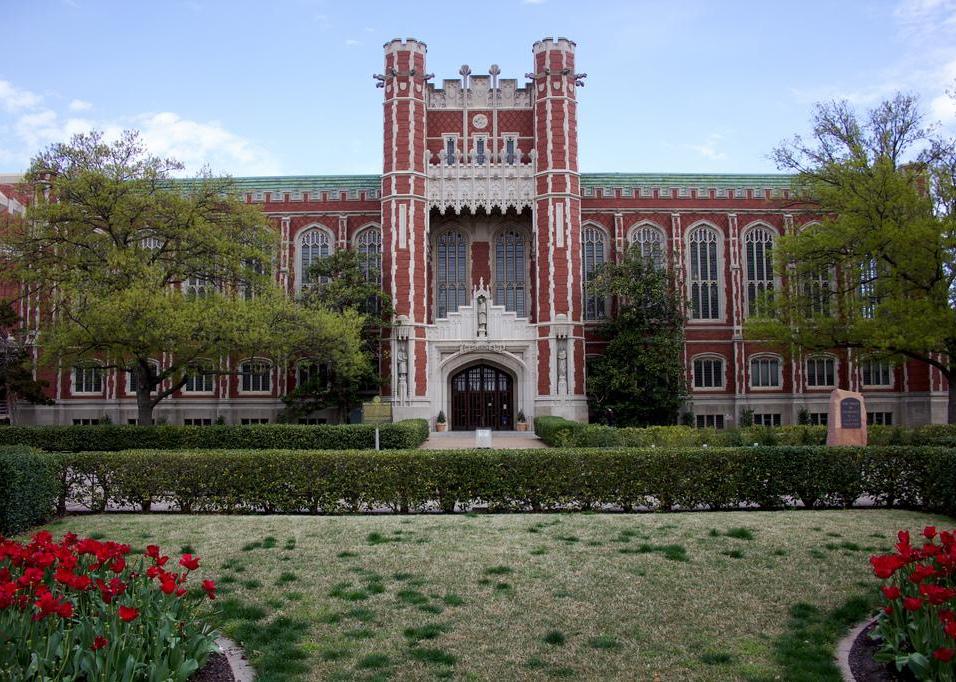
Sage Ross // Flickr
#42. Oklahoma
– Number of borrowers: 480,800
– Average loan balance per borrower: $32,102
Oklahoma offers loan forgiveness to physicians, dentists, and other health professionals who agree to serve in specific communities in the state.
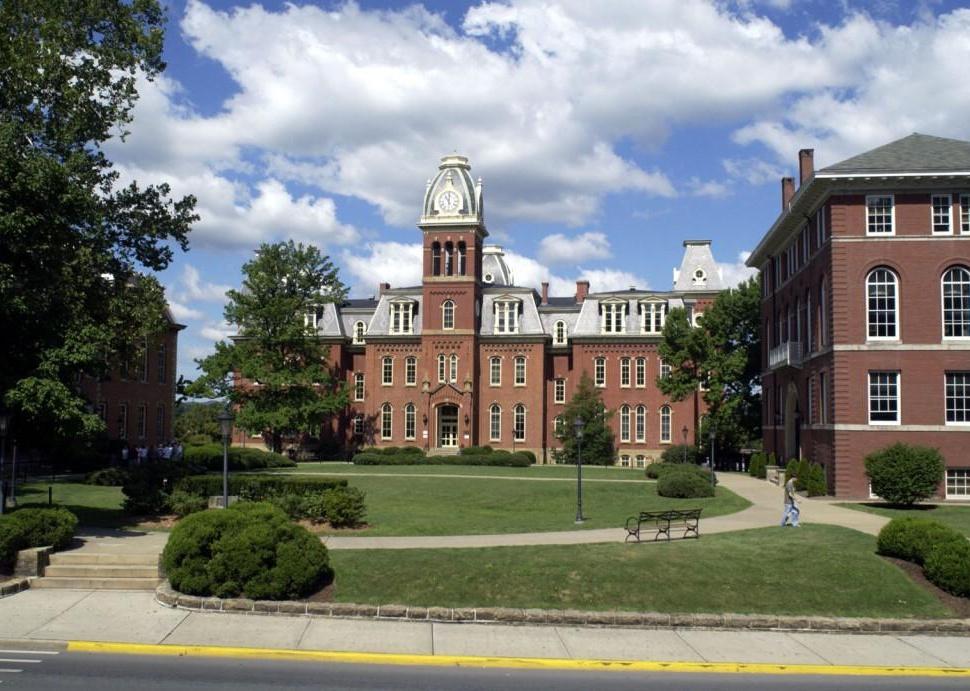
Swimmerguy269 // Wikimedia Commons
#41. West Virginia
– Number of borrowers: 217,200
– Average loan balance per borrower: $32,214
West Virginia recruits medical professionals to rural areas through student loan forgiveness. It looks for doctors, nurses, midwives, physician assistants, pharmacists, dentists, and other providers.

Jitze Couperus // Flickr
#40. Montana
– Number of borrowers: 132,900
– Average loan balance per borrower: $32,459
In Montana, medical professionals can receive up to $15,000 a year by working in certain areas in the state through the Montana State Loan Repayment Program.
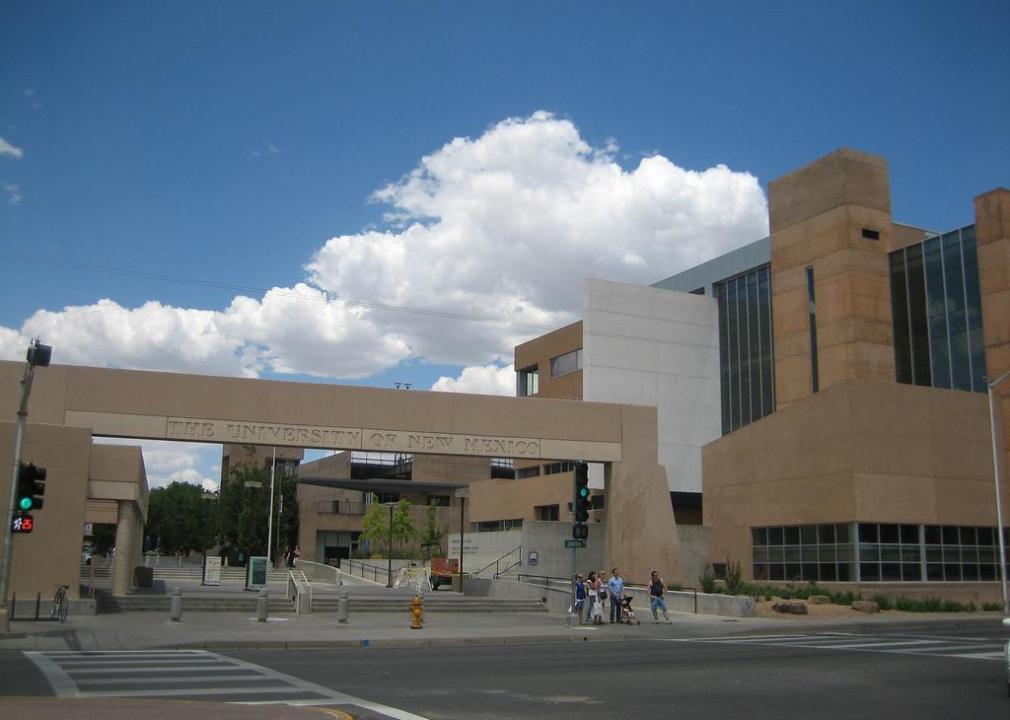
Eugene Kim // Flickr
#39. New Mexico
– Number of borrowers: 215,500
– Average loan balance per borrower: $32,944
For students at risk of defaulting on loans, New Mexico offers student loan forgiveness and consolidation of debt. Doctors and nurses who help address the health care shortage in New Mexico can qualify for no-interest loans and other benefits.
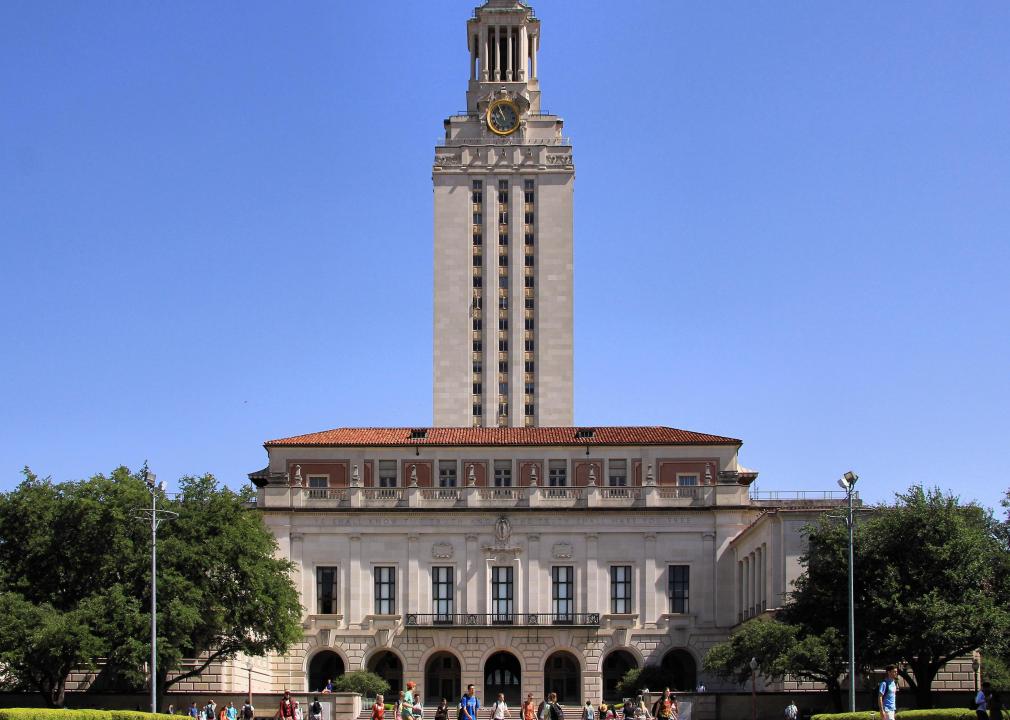
Larry D. Moore // Wikimedia Commons
#38. Texas
– Number of borrowers: 3,759,300
– Average loan balance per borrower: $32,998
A 2019 study by Southern Methodist University found that Black and Hispanic students in Texas borrow more than white students on average: $7,124 more for Black students and $453 for Hispanic students; meanwhile, Asian students borrow $3,155 less.
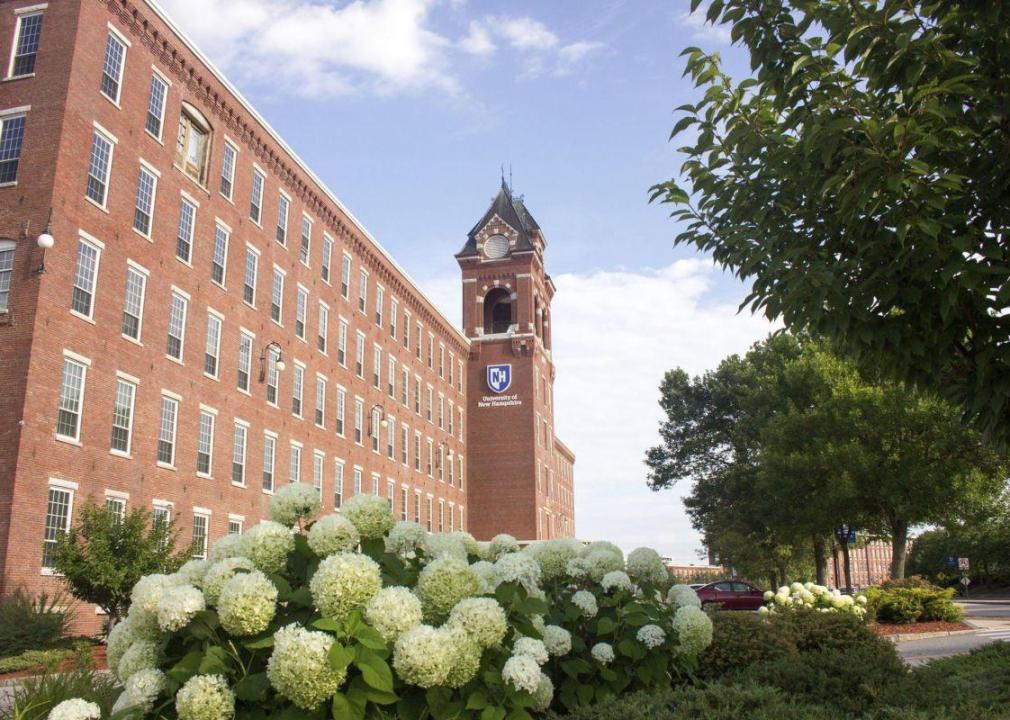
Millyard800 // Wikimedia Commons
#37. New Hampshire
– Number of borrowers: 219,000
– Average loan balance per borrower: $33,094
New Hampshire offers student loan forgiveness to primary care doctors, dentists, and other health care providers, with the goal of drawing them to underserved or low-income areas. It also offers help to lawyers working for nonprofit organizations.
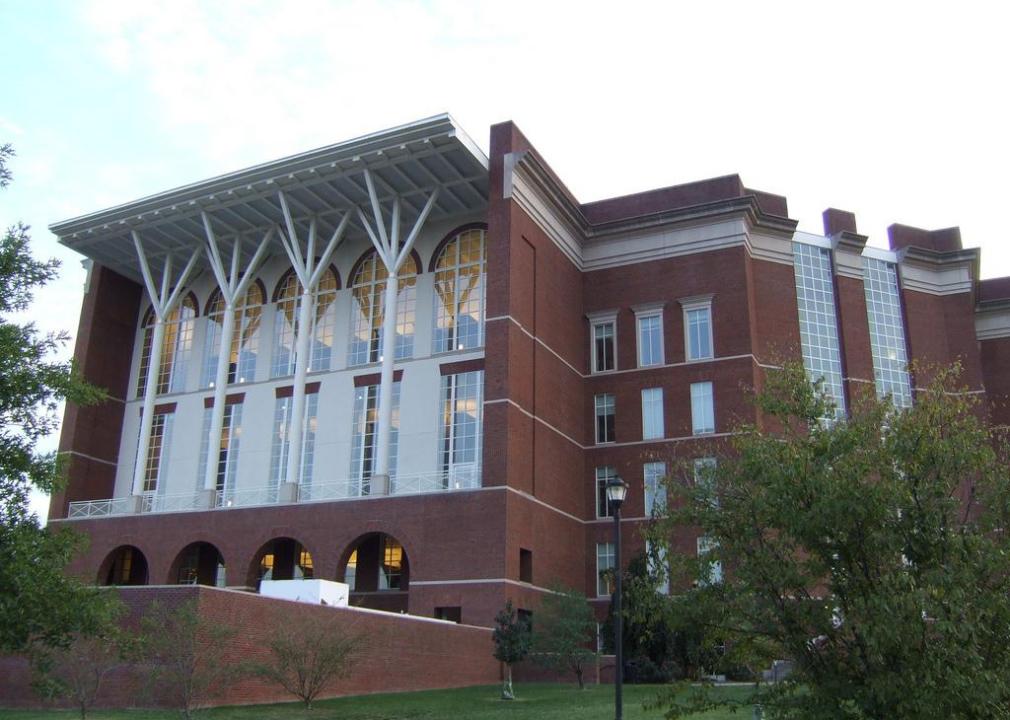
Tom Ipri // Flickr
#36. Kentucky
– Number of borrowers: 588,800
– Average loan balance per borrower: $33,155
By the end of 2021, Kentucky had a student loan delinquency rate of 10%, putting it among the top five states with the highest delinquency rates in the country. Kentucky has a loan repayment program for health care professionals who work in rural and underserved areas.
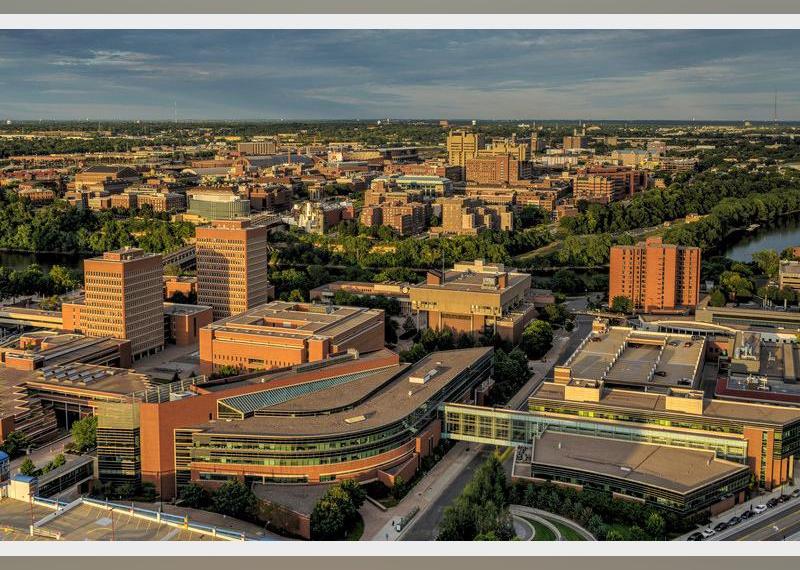
August Schwerdfeger // Flickr
#35. Minnesota
– Number of borrowers: 902,500
– Average loan balance per borrower: $33,161
Minnesota offers a range of loan forgiveness programs for health care technicians, dentists, rural mental health professionals, nurses, pharmacists, physicians, and veterinarians.
You may also like: Best private colleges in every state

Jaren Wilkey // Wikimedia Commons
#34. Utah
– Number of borrowers: 325,100
– Average loan balance per borrower: $33,474
Utah has some of the country’s lowest tuition costs at public universities and colleges but still has a higher average loan balance per borrower than 15 other states.
You may also like: 30 college majors that didn’t exist 50 years ago
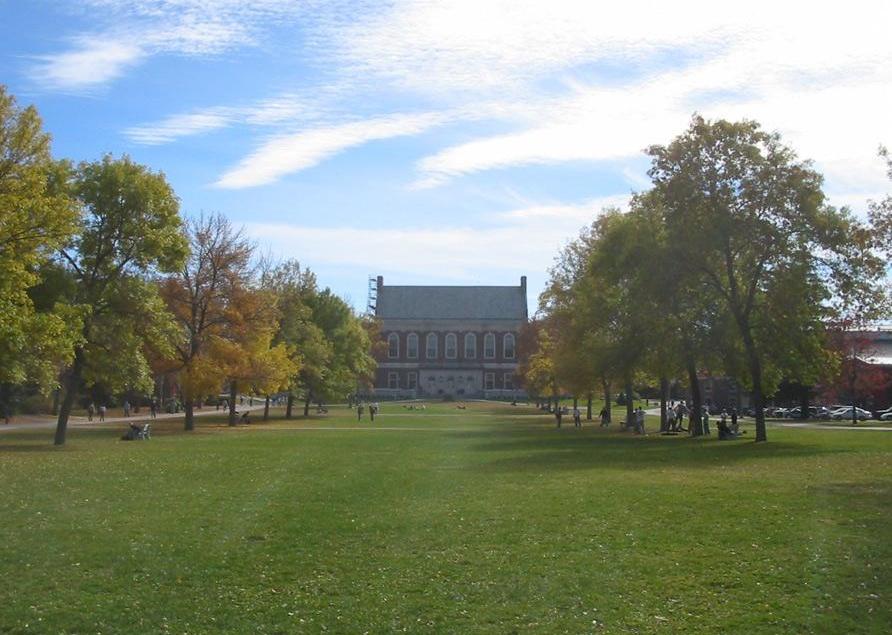
Jalnet2 // Wikimedia Commons
#33. Maine
– Number of borrowers: 203,200
– Average loan balance per borrower: $33,584
On average, Maine college graduates owed more than $33,500 each in student loans. The state offers student debt relief to graduates who live and work there under the Educational Opportunity Tax Credit.

Tnricci // Wikimedia Commons
#32. Rhode Island
– Number of borrowers: 153,200
– Average loan balance per borrower: $33,838
The Rhode Island Student Loan Authority offers low-cost student loans, refinancing choices, and free tools to find internships and scholarships. In 2019, it enacted a Student Loan Bill of Rights to make sure borrowers are treated fairly.
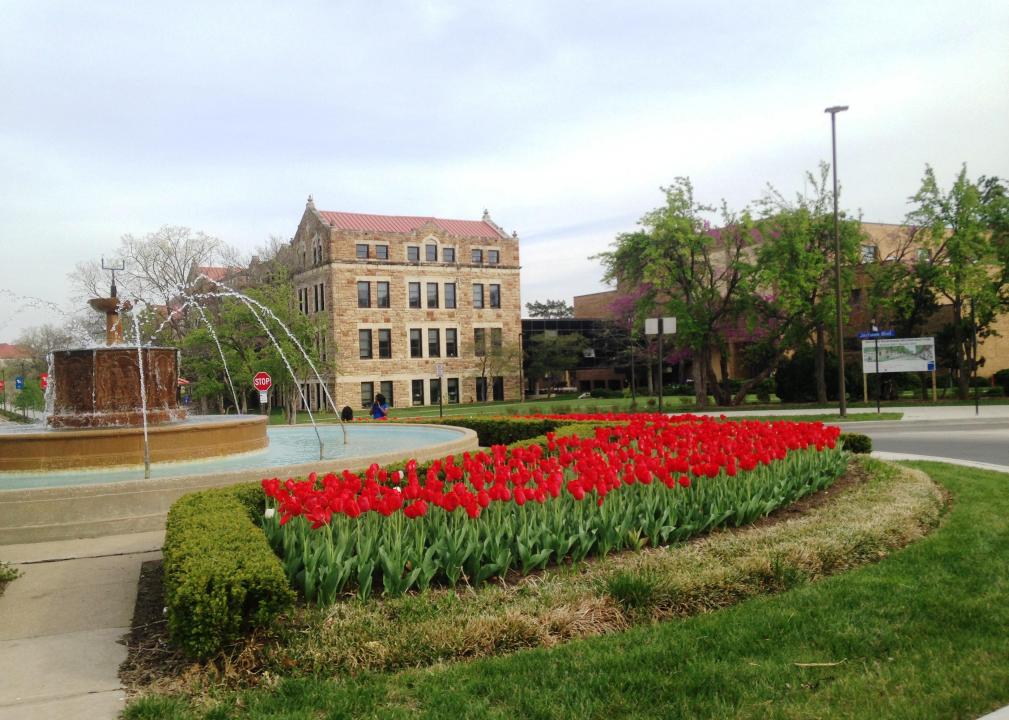
Nightryder84 // Wikimedia Commons
#31. Kansas
– Number of borrowers: 395,200
– Average loan balance per borrower: $33,954
Kansas offers loan repayment relief to students who will live in rural areas, are health care professionals, and are primary care or psychiatry residents through its Bridging Plan.
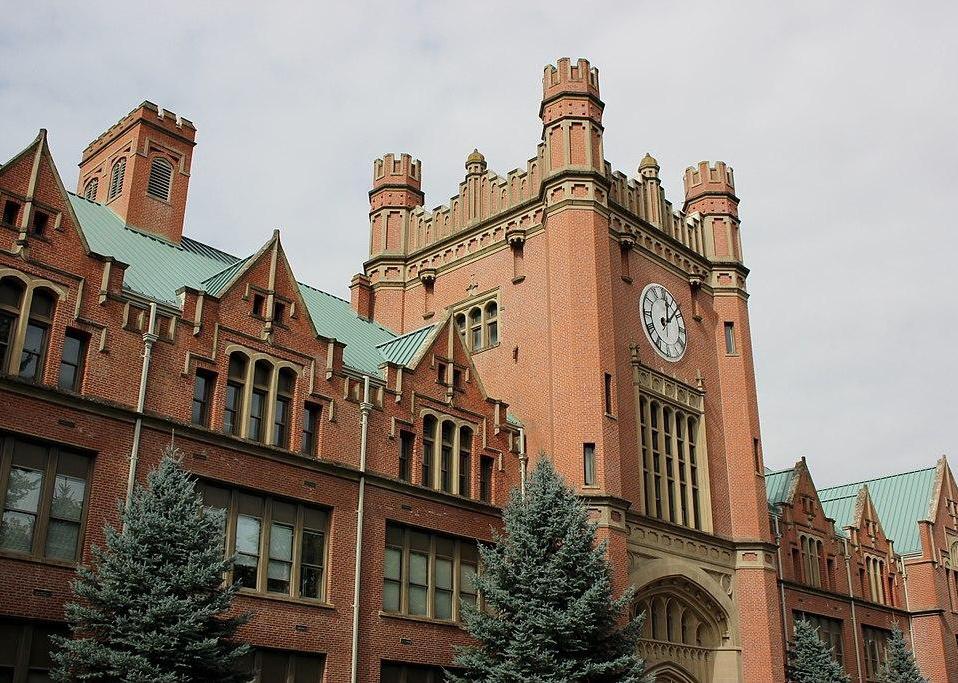
Apstrinka // Wikimedia Commons
#30. Idaho
– Number of borrowers: 219,400
– Average loan balance per borrower: $34,196
Idaho provides loan forgiveness programs for those working in areas short on health professionals. This includes physicians, clinicians, and nurses in rural and underserved areas. Idaho students owe, on average, $34,196.
You may also like: Best value colleges in every state
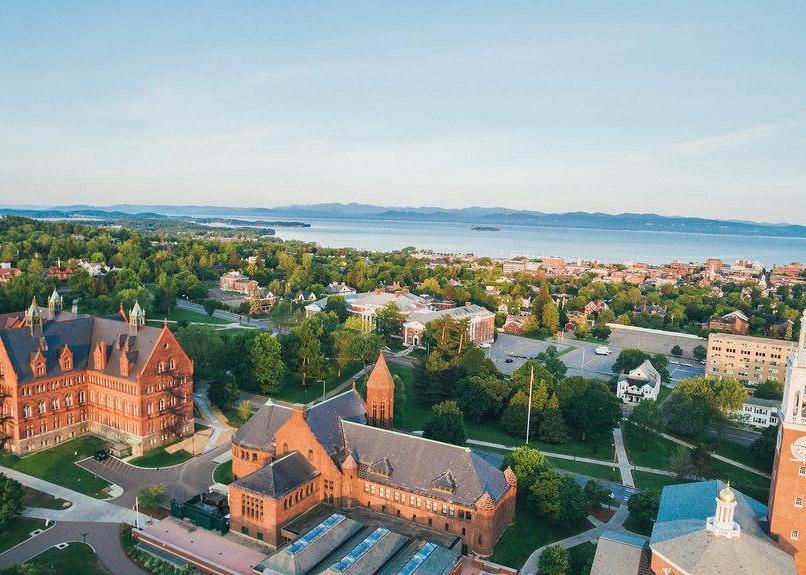
The University of Vermont // Flickr
#29. Vermont
– Number of borrowers: 96,300
– Average loan balance per borrower: $34,595
Vermont has the highest number of student loan borrowers who are 50 or older, according to a 2019 WalletHub study. Student loan debt there averaged $34,595 per borrower by the end of 2021—about $5000 more than the national average.
You may also like: Colleges that are richer than some countries
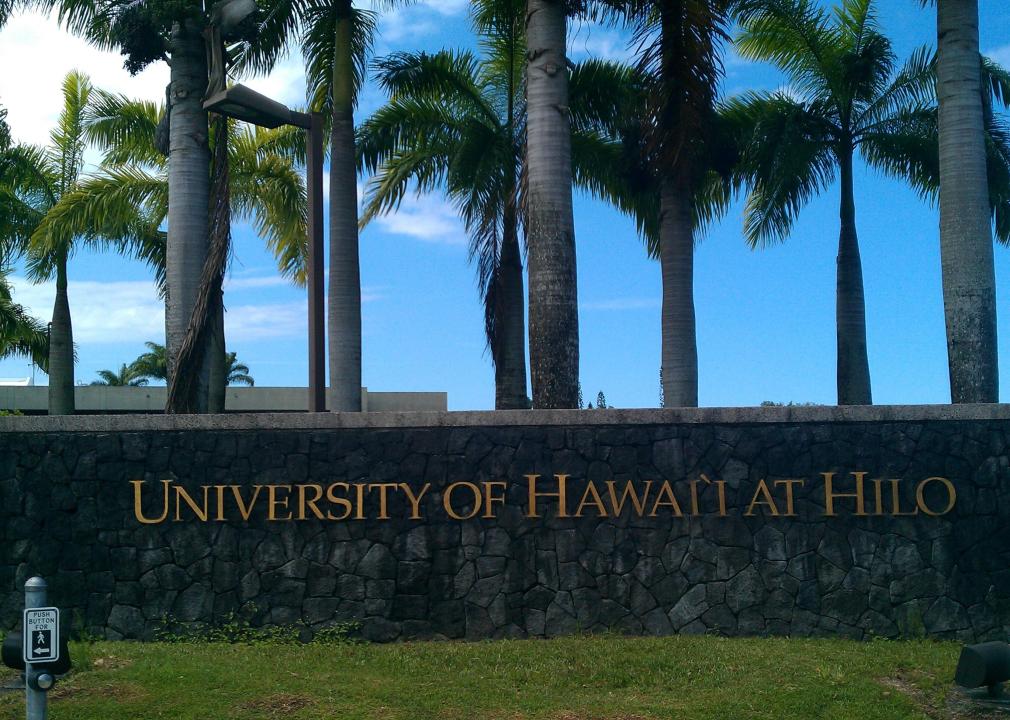
Vreed // Wikimedia Commons
#28. Hawaii
– Number of borrowers: 123,600
– Average loan balance per borrower: $34,608
The 10 campuses of the University of Hawaii are considered affordable, with in-state tuition at the three four-year schools below the national average. The state also has programs to keep costs down—namely the Hawaii Promise scholarship program for community college students and the Hawaii State Loan Repayment Program, which provides grants to health care professionals who fill geographic shortages.
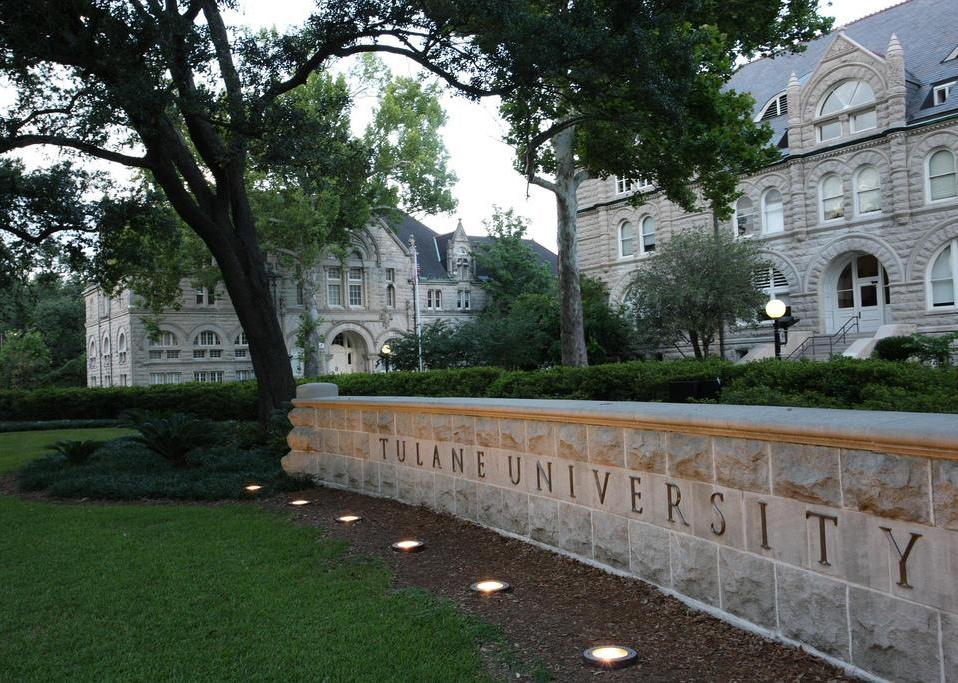
Louisiana Travel // Flickr
#27. Louisiana
– Number of borrowers: 644,600
– Average loan balance per borrower: $34,839
In 2022, Louisiana reported that more than half of its high school graduates were eligible for state scholarships for college. The state’s FY23 budget also includes a 12% increase in funding for higher education.
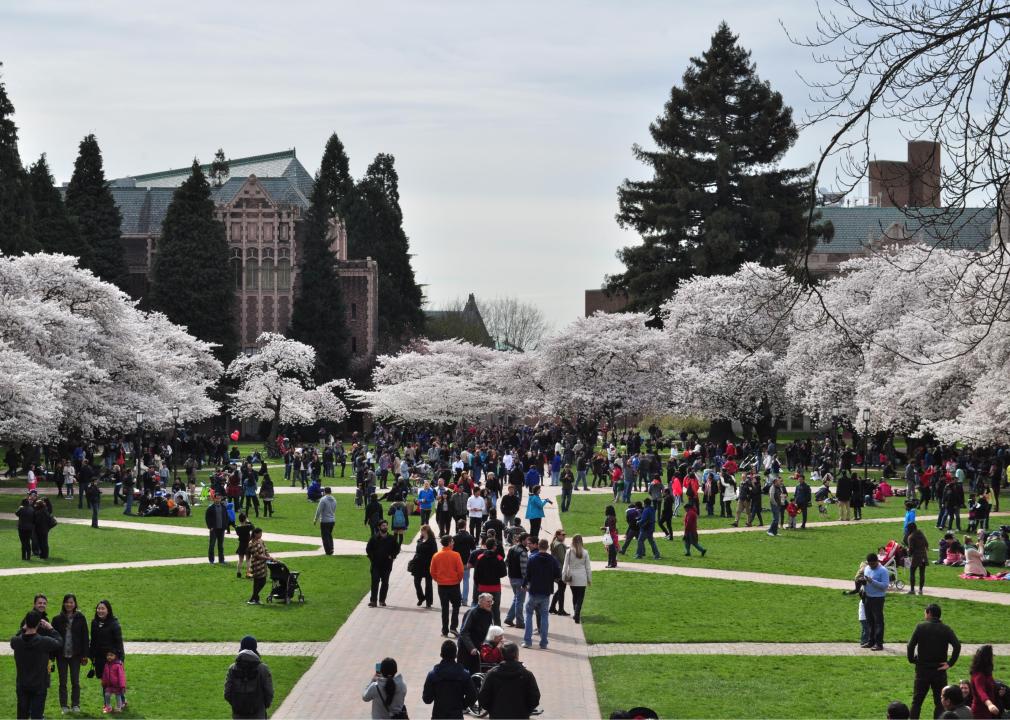
Joe Mabel // Wikimedia Commons
#26. Washington
– Number of borrowers: 816,900
– Average loan balance per borrower: $34,846
The Student Loan Survival Guide, published by the Washington attorney general’s office, offers links to resources for financing higher education to every high school student considering college loans and former college students who struggled with the cost of school.
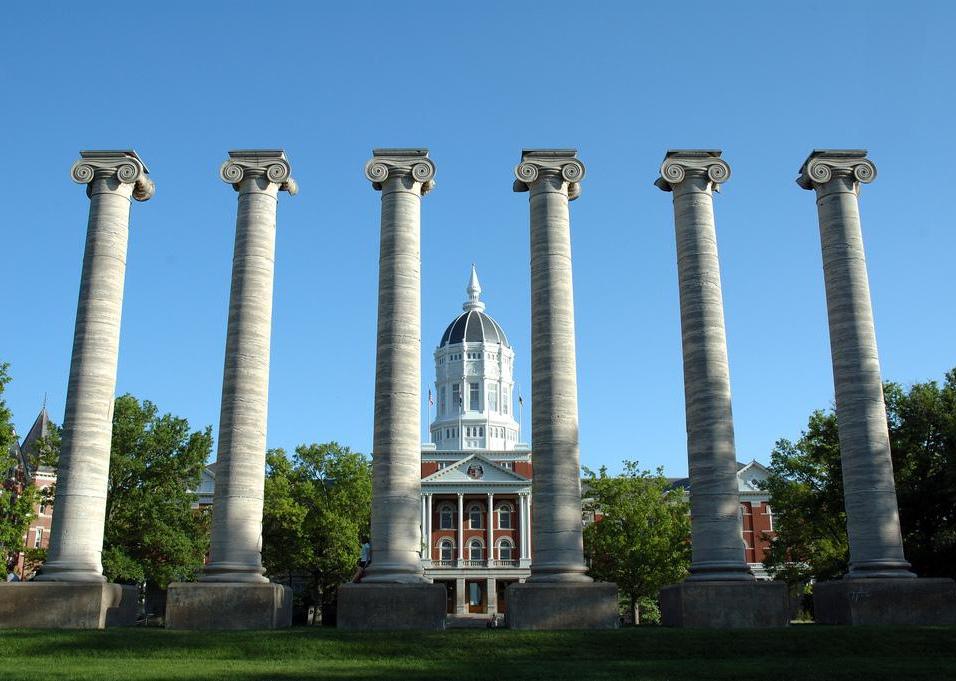
Adam Procter // Flickr
#25. Missouri
– Number of borrowers: 829,100
– Average loan balance per borrower: $35,095
In Missouri, 58% of graduates had student loan debt in 2017, and they owed an average of $28,650. By the end of 2021, borrowers owed more than $35,000 each on average. The state offers student loan forgiveness to some employees of government agencies or nonprofit organizations.
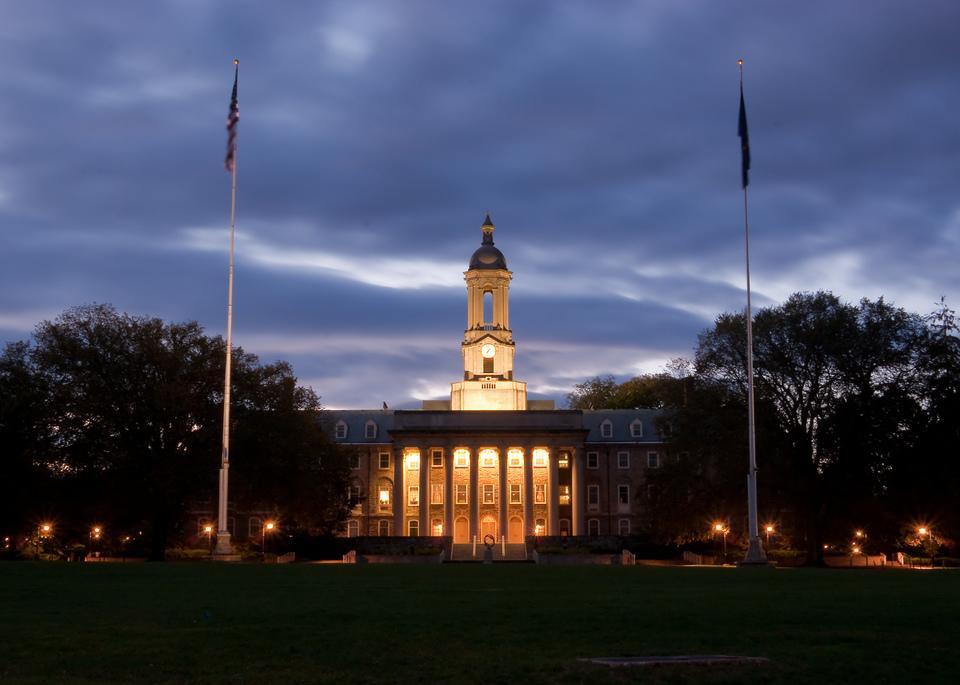
shidairyproduct // Flickr
#24. Pennsylvania
– Number of borrowers: 2,032,400
– Average loan balance per borrower: $35,349
With its borrowers owing more than $35,000 each on average, Pennsylvania has some of the highest student debt in the country. It hovers around the middle of the pack for delinquency rate, though, at 7.2%

John Phelan // Wikimedia Commons
#23. Massachusetts
– Number of borrowers: 1,046,800
– Average loan balance per borrower: $35,400
In 2021, Massachusetts put into place a Student Borrowers Bill of Rights and appointed a Student Loan Ombudsman in order to protect student borrowers.
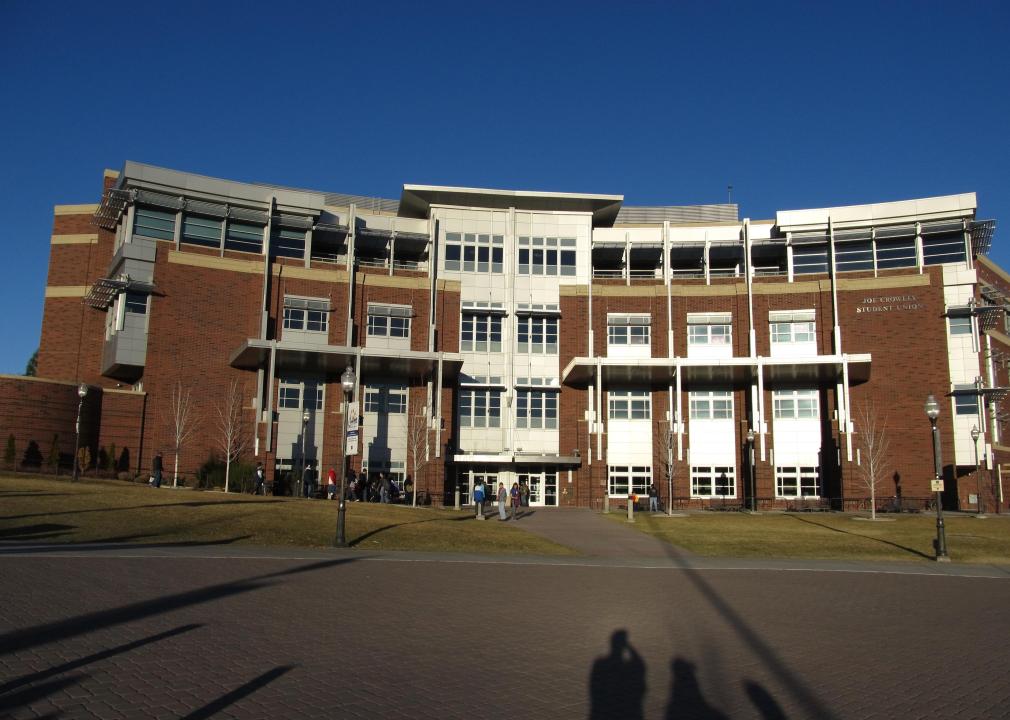
Ken L. // Wikimedia Commons
#22. Nevada
– Number of borrowers: 351,300
– Average loan balance per borrower: $35,688
Nevada State College provides students with access to a financial literacy program. Still, in the last quarter of 2021, the state’s loan delinquency rate was the fifth-highest in the nation.
You may also like: Highest-paying jobs that require a bachelor’s degree
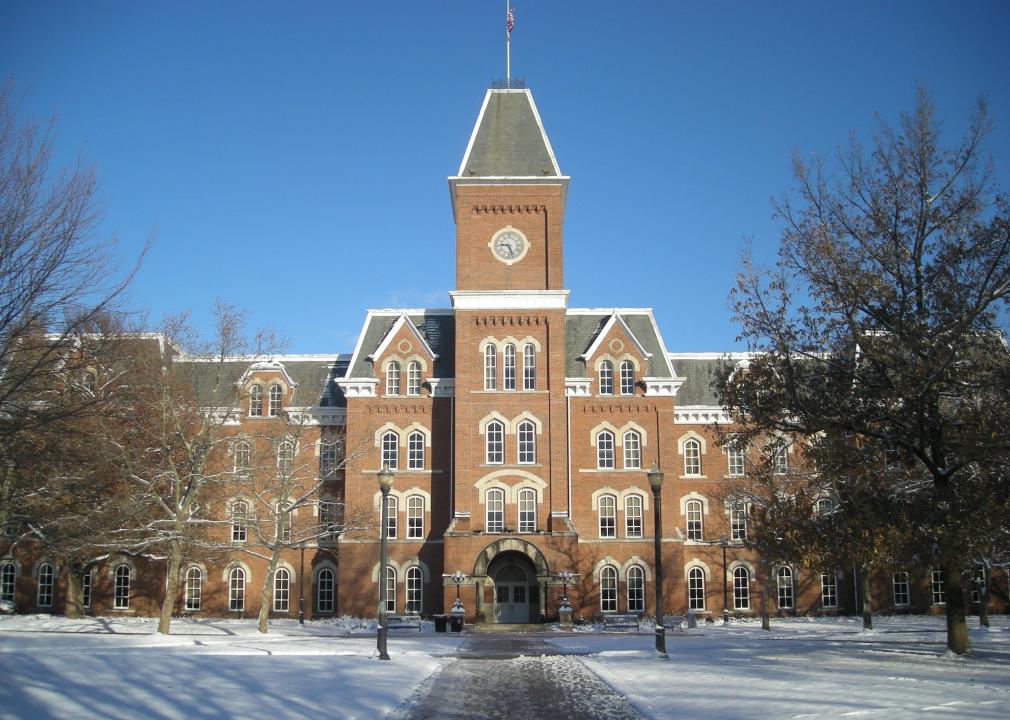
Michael Barera // Wikimedia Commons
#21. Ohio
– Number of borrowers: 1,810,900
– Average loan balance per borrower: $35,806
Ohio offers a variety of repayment programs for doctors, dentists, and other health care providers, including the Ohio Department of Health State Loan Repayment Program, the Ohio Physician Loan Repayment Program, the Ohio Dentist and Dental Hygienist Loan Repayment Program, and the Nurse Education Assistance Loan Program.
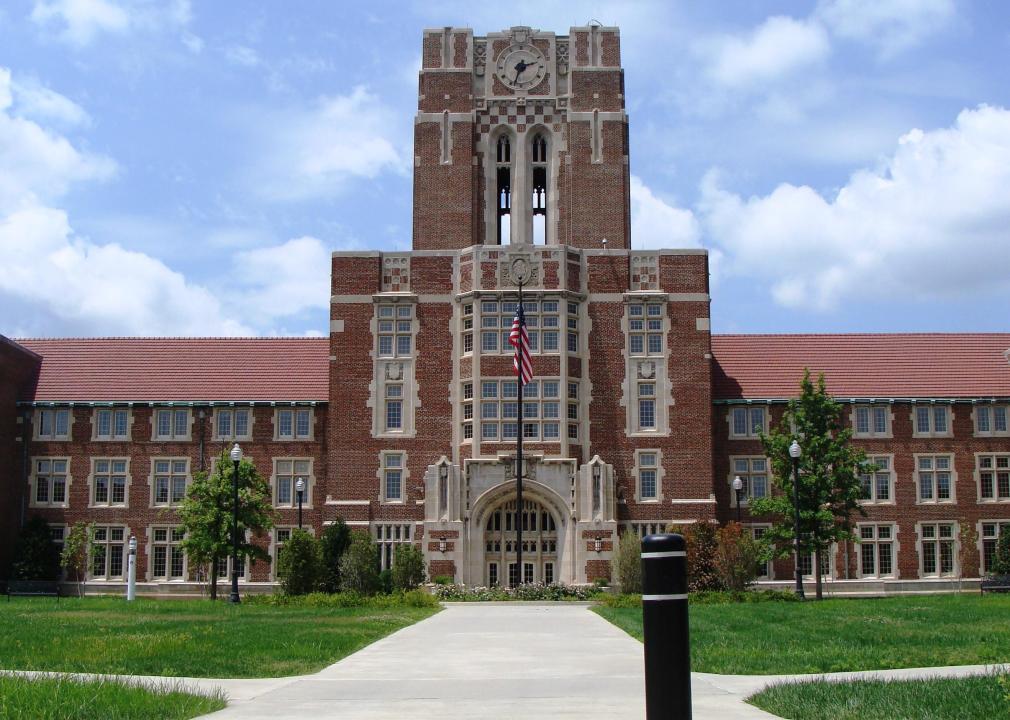
Nightryder84 // Wikimedia Commons
#20. Tennessee
– Number of borrowers: 872,000
– Average loan balance per borrower: $36,155
Tennessee offers a loan forgiveness program for state residents who are registered nurses that agree to become administrators or teachers in nursing education programs. It also offers a Minority Teaching Fellows Program that grants $5000 per year for qualified students pursuing teacher certification at an eligible Tennessee college.
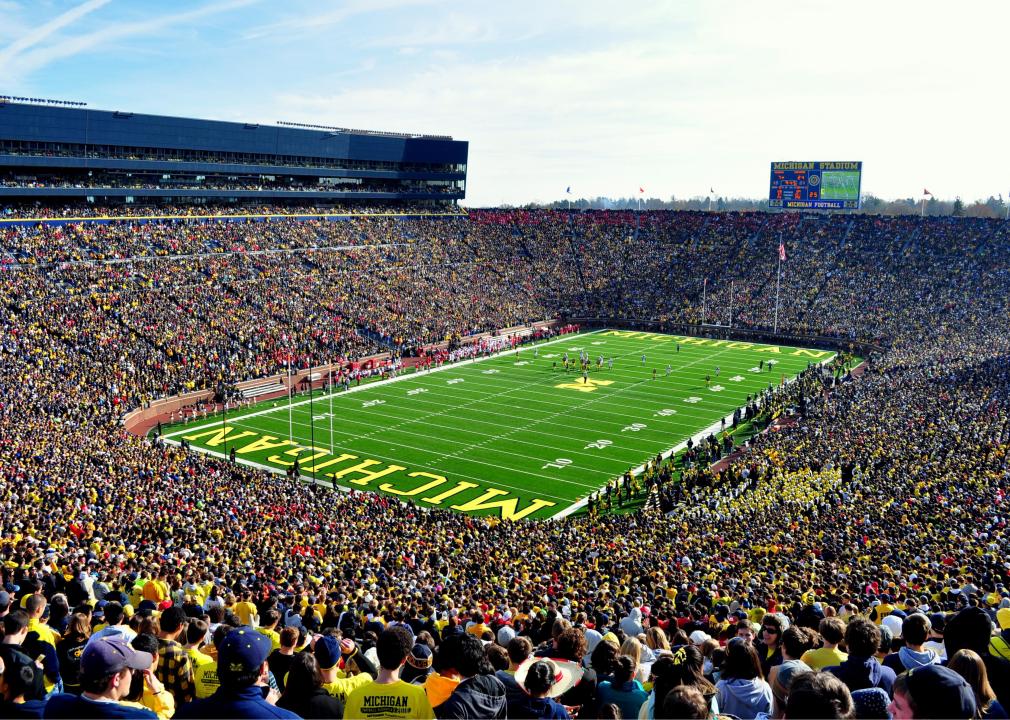
AndrewHorne // Wikimedia Commons
#19. Michigan
– Number of borrowers: 1,430,900
– Average loan balance per borrower: $36,221
Michigan places fifth in student loan debt as a percentage of income, according to a 2019 WalletHub study. The state offers scholarships or loan forgiveness programs for teachers, nurses, doctors, dentists, and other health care professionals.
You may also like: Best value big colleges in America
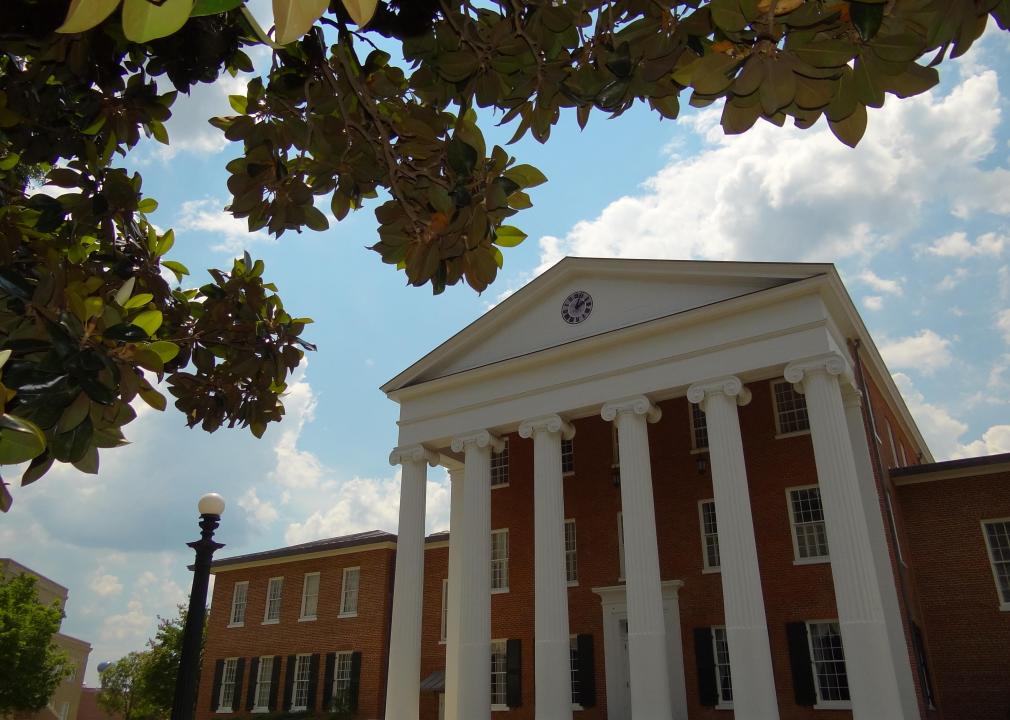
Adam Jones Ph.D. // Wikicommons
#18. Mississippi
– Number of borrowers: 414,300
– Average loan balance per borrower: $36,366
Mississippi offers forgivable loans to nurses and teachers in undergraduate programs and to counselors, school administrators, dyslexia therapists, and speech pathologists in graduate programs.
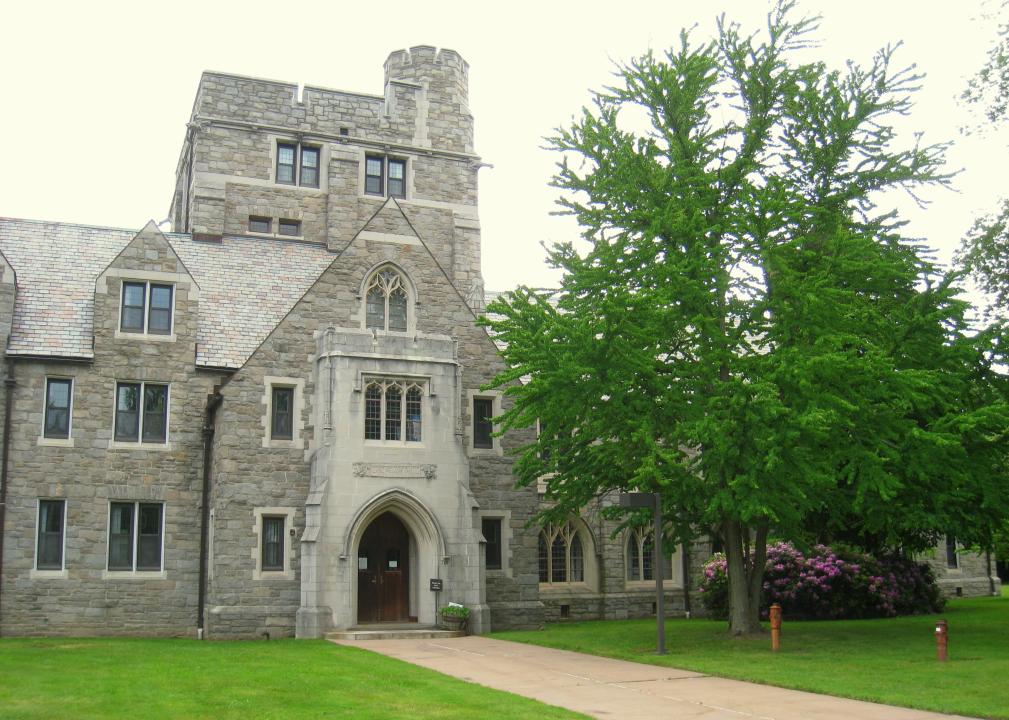
Daderot // Wikimedia Commons
#17. Connecticut
– Number of borrowers: 542,800
– Average loan balance per borrower: $36,391
In April 2020, Connecticut’s governor announced that in collaboration with other states, Connecticut had reached an agreement for relief for some privately held student loans. The state also offers a Minority Teacher Incentive program that provides grants to students and loan reimbursement of up to $2,500 a year for participants who become teachers for Connecticut’s public school system.
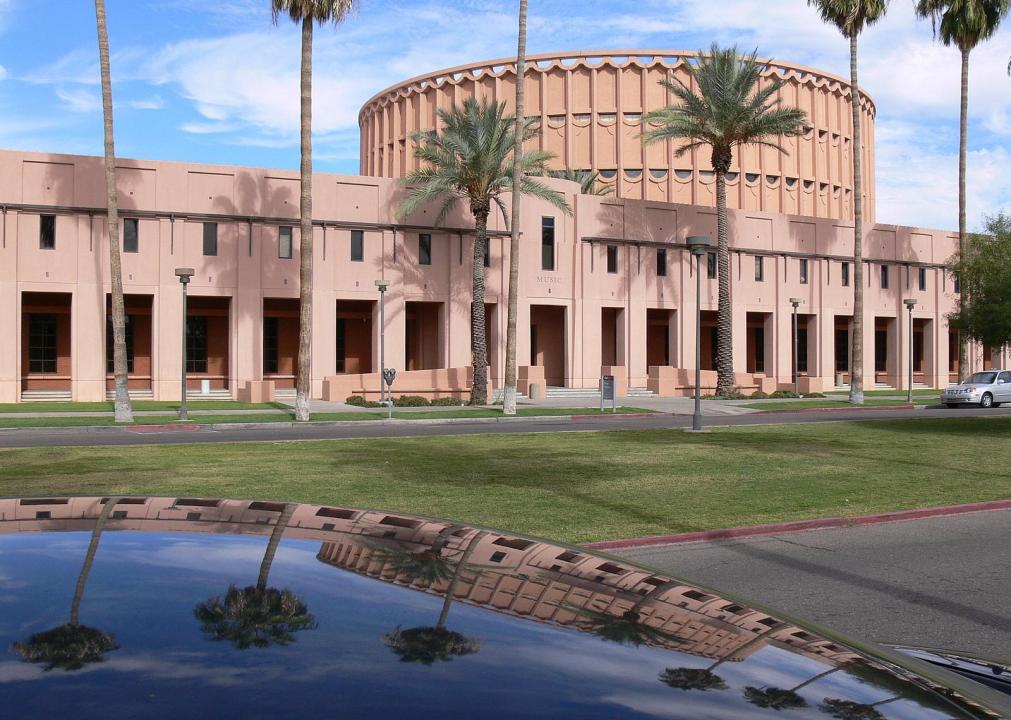
Wars // Wikimedia Commons
#16. Arizona
– Number of borrowers: 872,600
– Average loan balance per borrower: $36,682
The student loan delinquency rate for borrowers in Arizona was 8.7% at the end of 2021—down 3% from the previous year. The state has a few loan repayment programs for teachers and qualified borrowers working in health services.
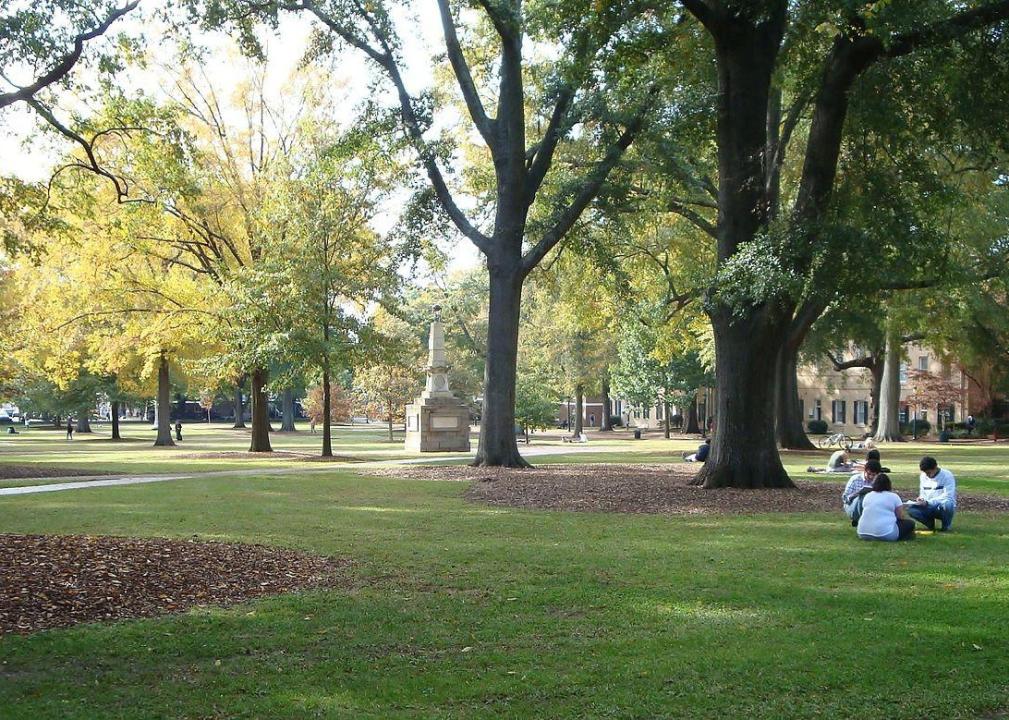
Dfscgt21 // Wikimedia Commons
#15. South Carolina
– Number of borrowers: 745,500
– Average loan balance per borrower: $36,698
A WalletHub study in 2019 found that South Carolina ranked fourth for debt as a percentage of income in the U.S. The state offers several types of loans and loan forgiveness programs for students pursuing the teaching profession and graduates serving as teachers.
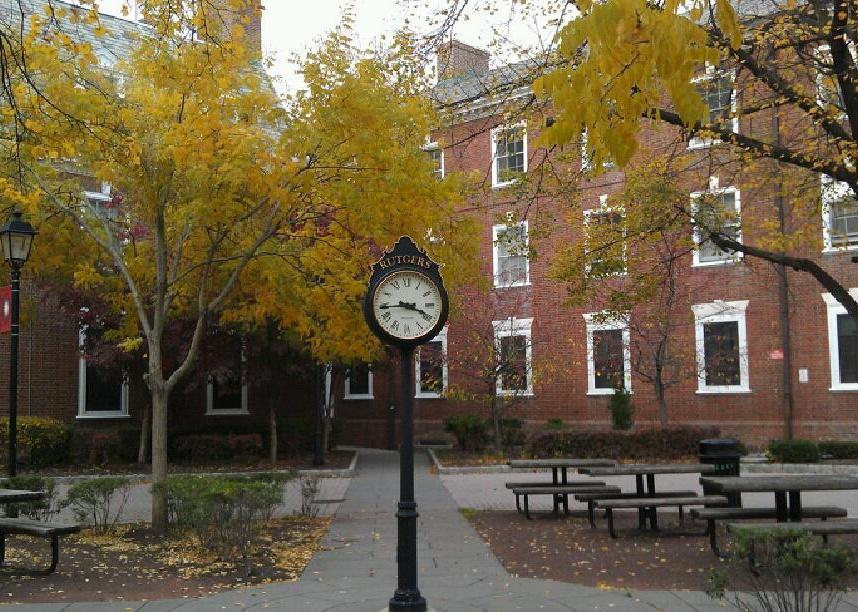
Lacwal12 // Wikimedia Commons
#14. New Jersey
– Number of borrowers: 1,339,800
– Average loan balance per borrower: $37,003
Although New Jersey borrowers owe more than borrowers in 36 other states as of the last quarter of 2021, the state has a borrower delinquency rate of just 5.8%—which is better than 37 other states. The state also offers loan redemption programs for borrowers in specific professions, including lawyers, nursing instructors, and primary care health providers.
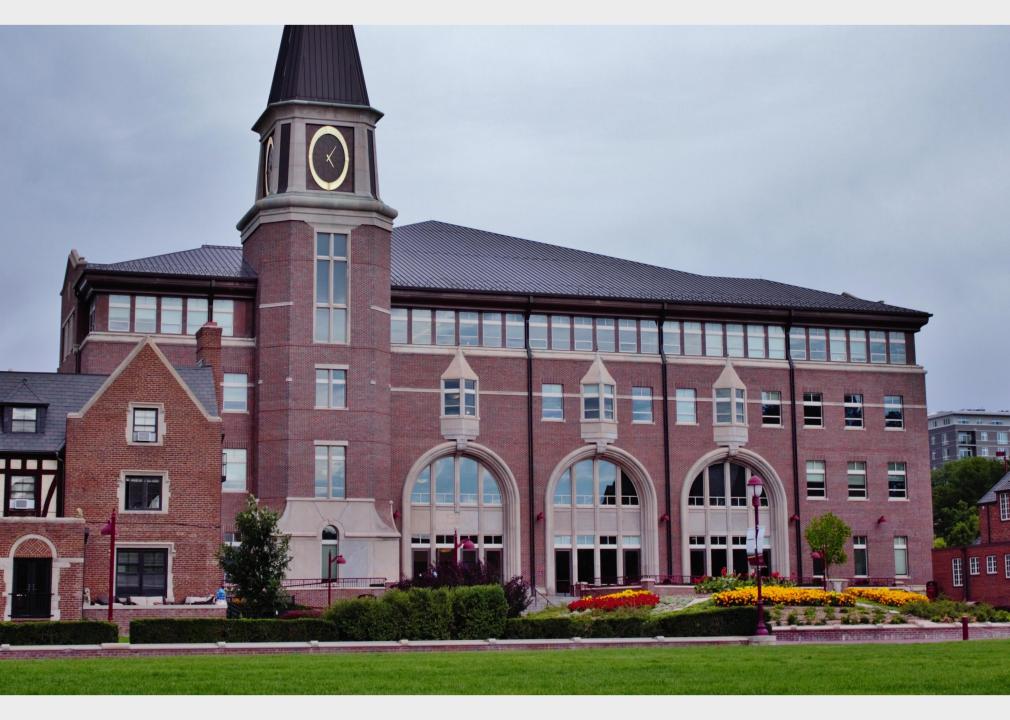
Cooopersmith // Wikimedia Commons
#13. Colorado
– Number of borrowers: 804,300
– Average loan balance per borrower: $37,235
Colorado is more reliant on tuition than other states. In fact, 70% of funding for higher education in the state comes from tuition; the national average is 46.6%. This policy forces many students in Colorado to borrow.
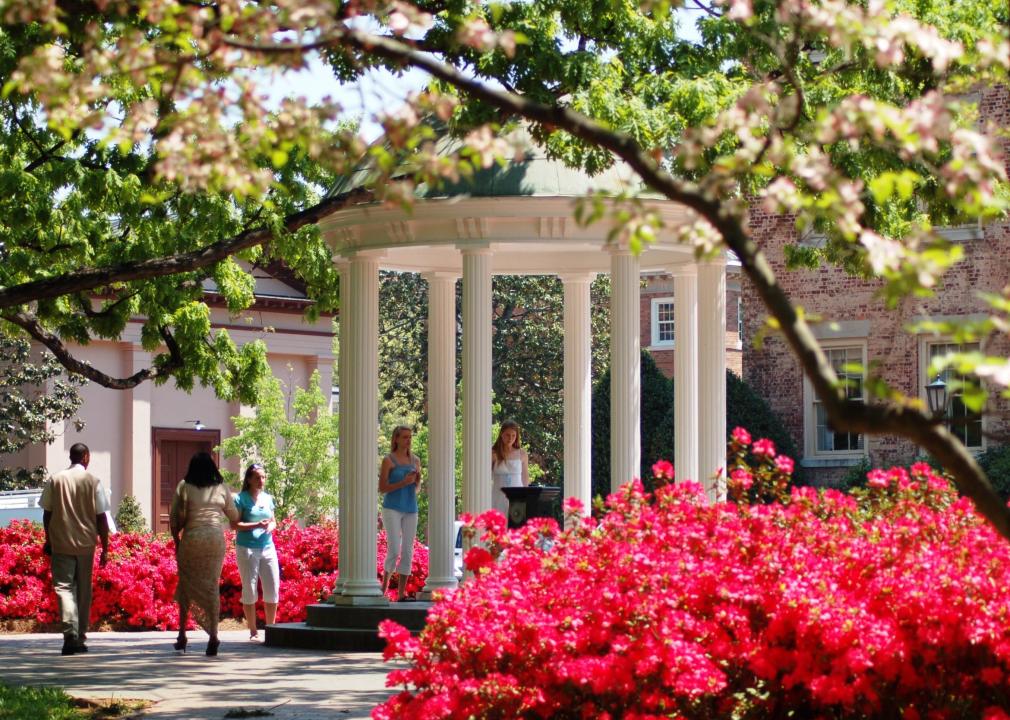
Caroline Culler // Wikimedia Commons
#12. North Carolina
– Number of borrowers: 1,340,500
– Average loan balance per borrower: $37,511
In North Carolina, more than 60% of students who graduate have debt; however, its schools have relatively low tuition and the state’s governor directed an additional $34 million dollars for postsecondary education in April 2022.
You may also like: 50 best colleges in the Midwest
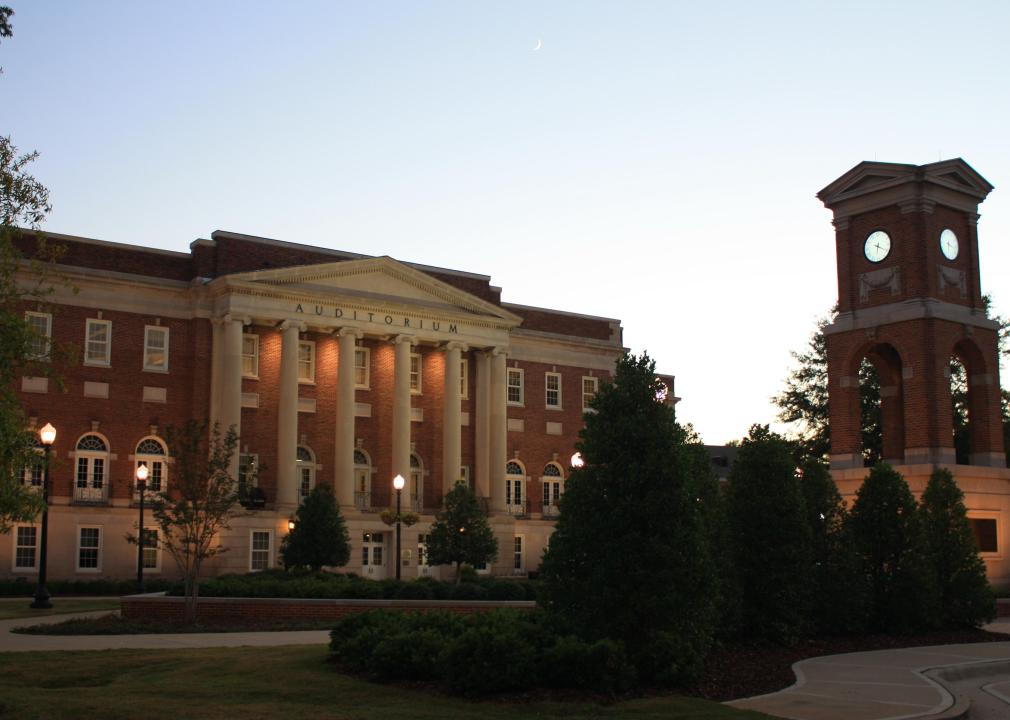
Deutschlandreform // Wikimedia Commons
#11. Alabama
– Number of borrowers: 615,800
– Average loan balance per borrower: $37,730
Alabama ranks in the top states for rising student debt over five years, according to an Experian analysis in 2019, and 50.3% of borrowers are under age 35. The state offers a student grant program for qualified applicants that attend one of 12 participating colleges.

Michael Camilleri // Flickr
#10. California
– Number of borrowers: 4,021,200
– Average loan balance per borrower: $37,783
In September 2020, California’s governor signed the Student Borrower Bill of Rights into law. The law helps students participate in loan repayment and forgiveness programs. The California State Loan Repayment Program offers relief to doctors, nurses, midwives, pharmacists, and other health care providers who will practice in areas of the state where they are most needed.
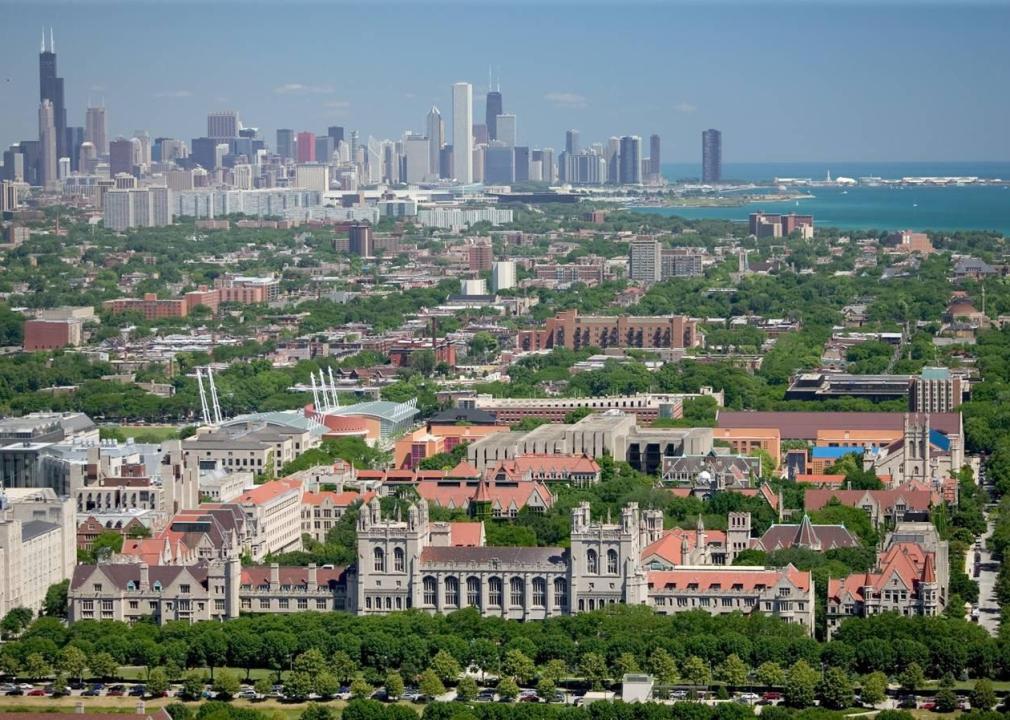
Ibrahim Old // Wikimedia Commons
#9. Illinois
– Number of borrowers: 1,713,900
– Average loan balance per borrower: $37,869
College loans in Illinois can be refinanced at low interest rates by the Illinois Treasurer’s Office under the Illinois Student Loan Investment Act passed in 2019. Some 17% of the state’s population has student loan debt. Its balance per borrower is nearing $40,000 —which is among the top 10 highest.
You may also like: 30 famous people you didn’t know were college athletes
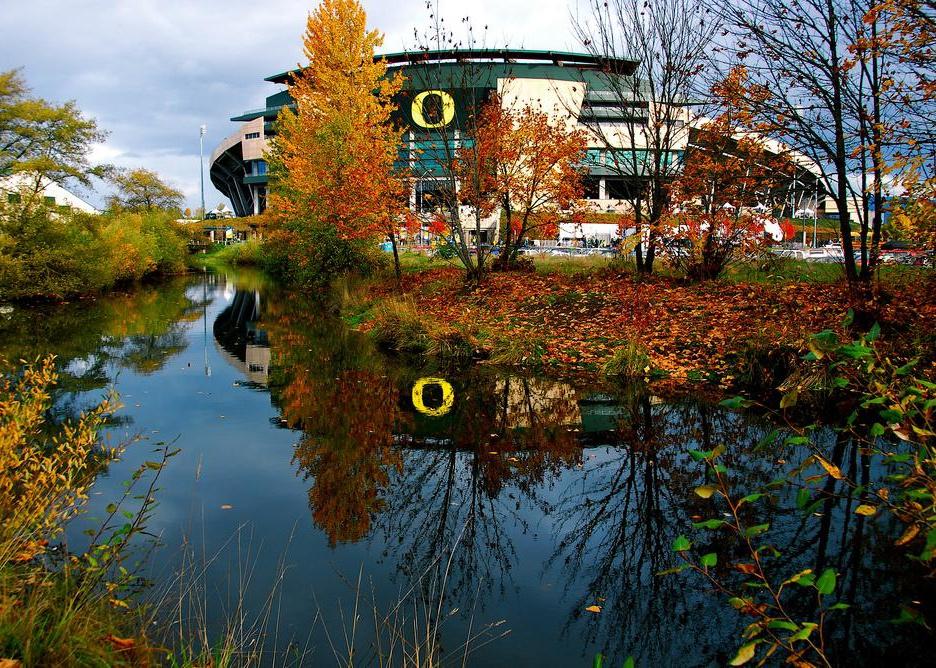
Don Hankins // Flickr
#8. Oregon
– Number of borrowers: 556,000
– Average loan balance per borrower: $38,248
Oregon’s borrower delinquency rate was 8.3% as of the end of 2021—down three percent from the previous year. The state offers forgiveness and incentive programs for health care providers and lawyers.
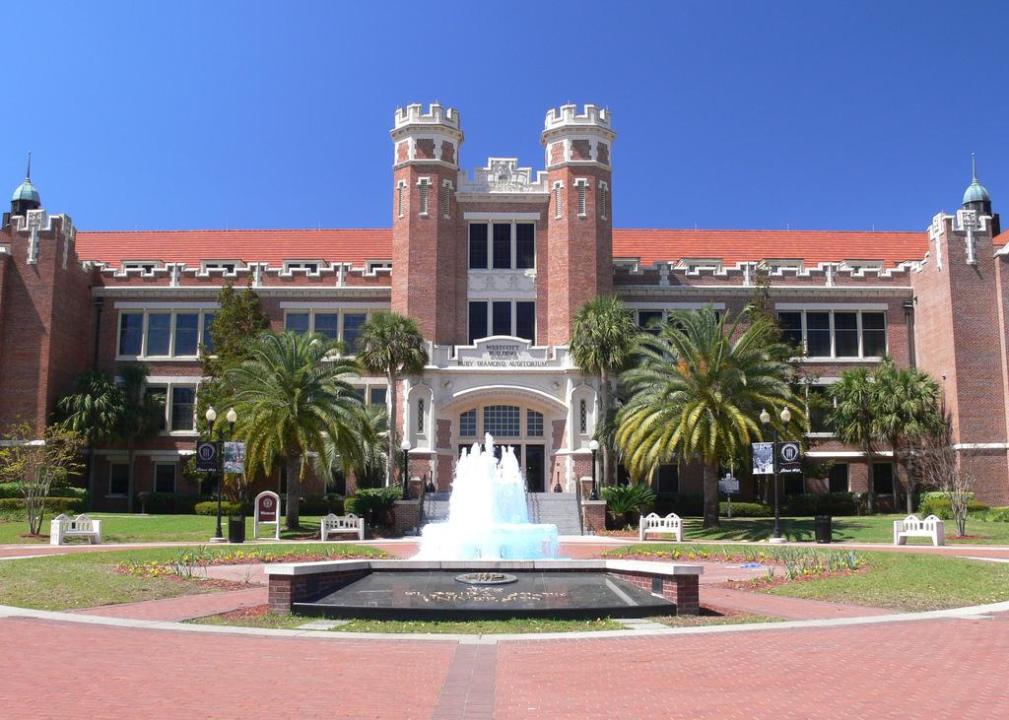
Jackson Myers // Flickr
#7. Florida
– Number of borrowers: 2,646,400
– Average loan balance per borrower: $38,653
Florida passed a law in 2020 to protect graduates’ professional licenses if they defaulted on their loans; prior to the passage of this law, graduates could have professional licenses revoked for failing to pay their student loans. Florida also has forgiveness programs for different professions, including the law and nursing fields.
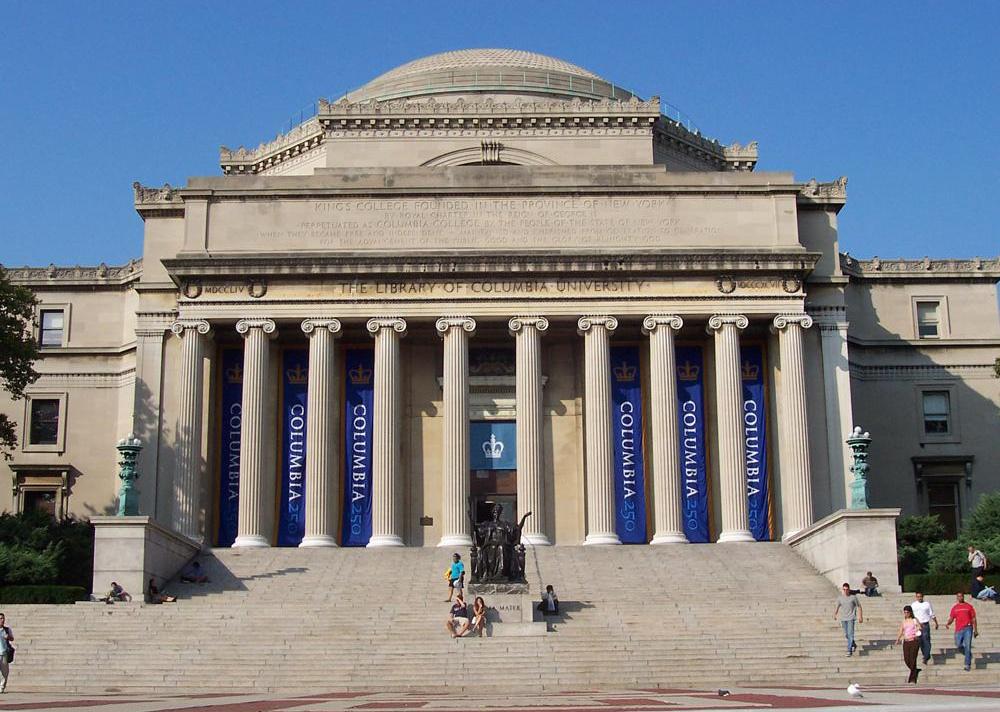
InSapphoWeTrust // Flickr
#6. New York
– Number of borrowers: 2,579,600
– Average loan balance per borrower: $38,668
College graduates of an approved New York State college or university who agree to operate a farm in the state full time for five years can obtain loan forgiveness under a young farmers program. The state has forgiveness programs for a number of other professions as well.
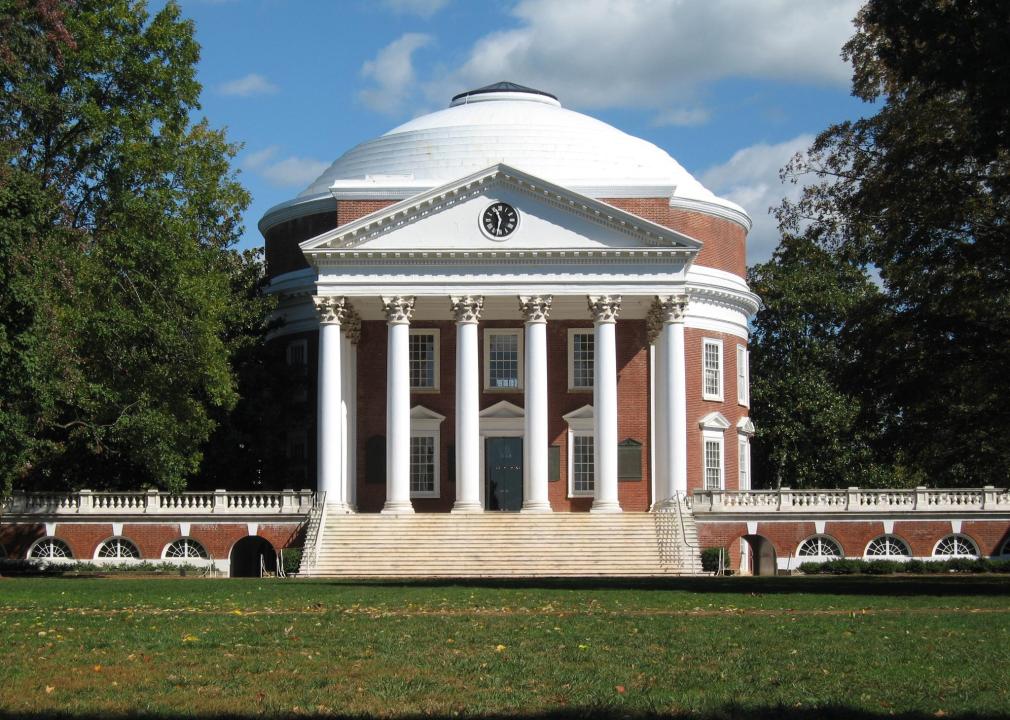
Aaron Josephson // Wikimedia Commons
#5. Virginia
– Number of borrowers: 1,143,200
– Average loan balance per borrower: $39,001
Among Virginia’s graduates, 57% had student loan debt, according to a 2019 report from the nonprofit The Institute for College Access and Success. In 2021, the state passed a bill of rights for student borrowers.
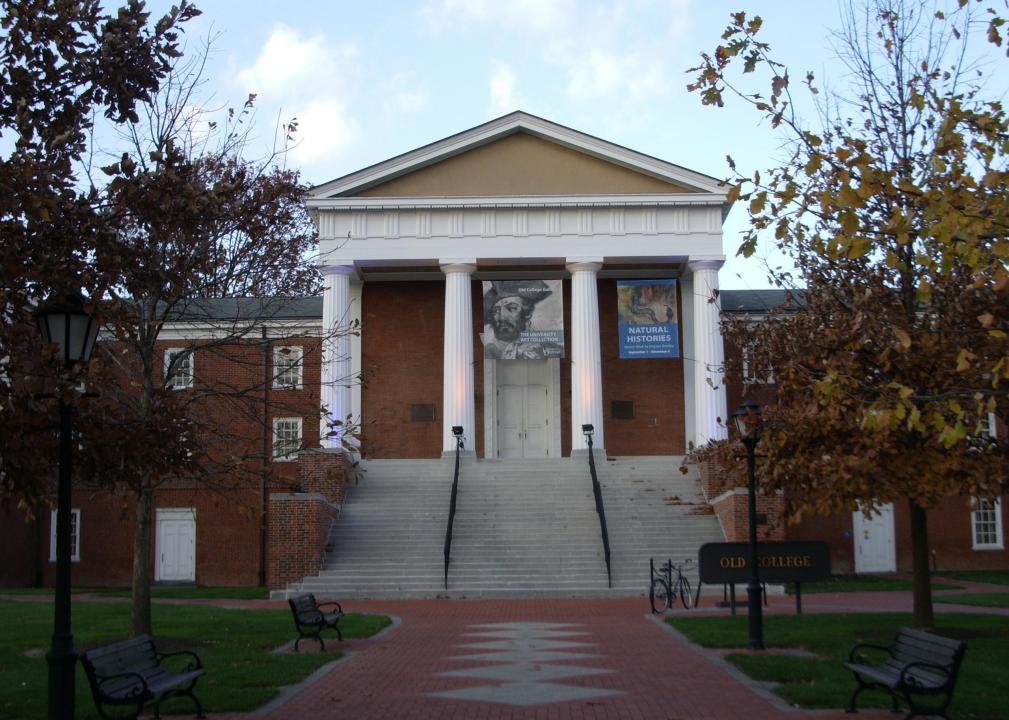
Artstuffmatters // Wikimedia Commons
#4. Delaware
– Number of borrowers: 137,300
– Average loan balance per borrower: $39,238
Delaware’s average debt per borrower is among the highest in the country; only Georgia, Maryland, and Washington D.C. surpass it. Delaware’s student loan repayment program helps to offset this burden.
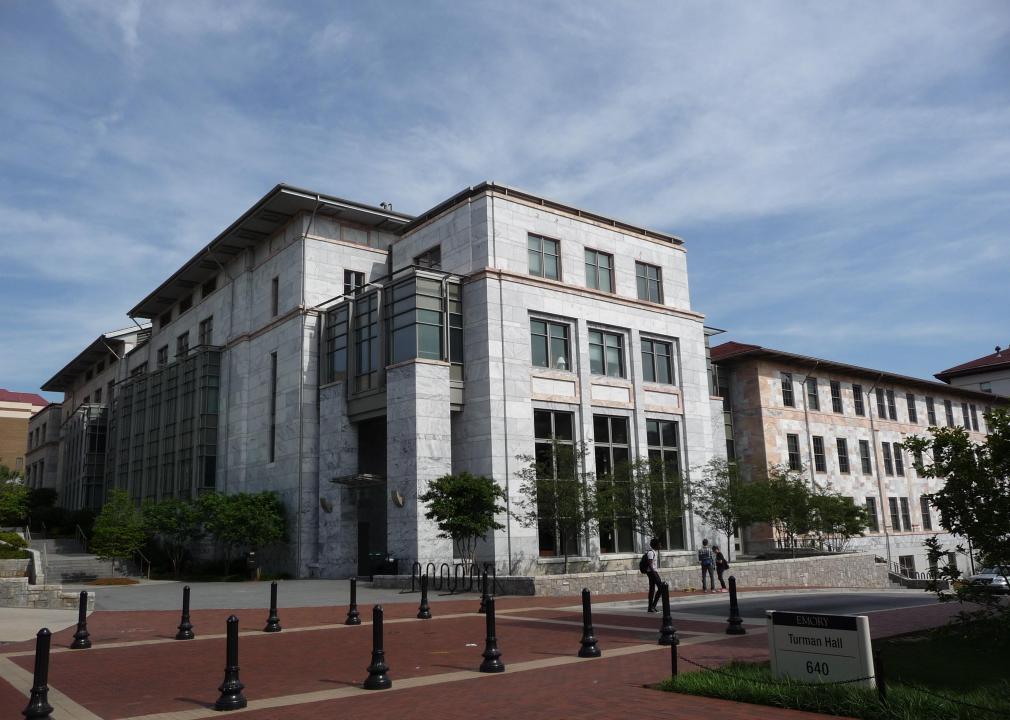
Daniel Mayer // Wikimedia Commons
#3. Georgia
– Number of borrowers: 1,641,600
– Average loan balance per borrower: $41,826
In Georgia, 56% of the graduating class of 2020 had student loan debt. The average loan balance per borrower is especially high in the state, considering that 79% of students attended public colleges which are usually less expensive than private colleges.
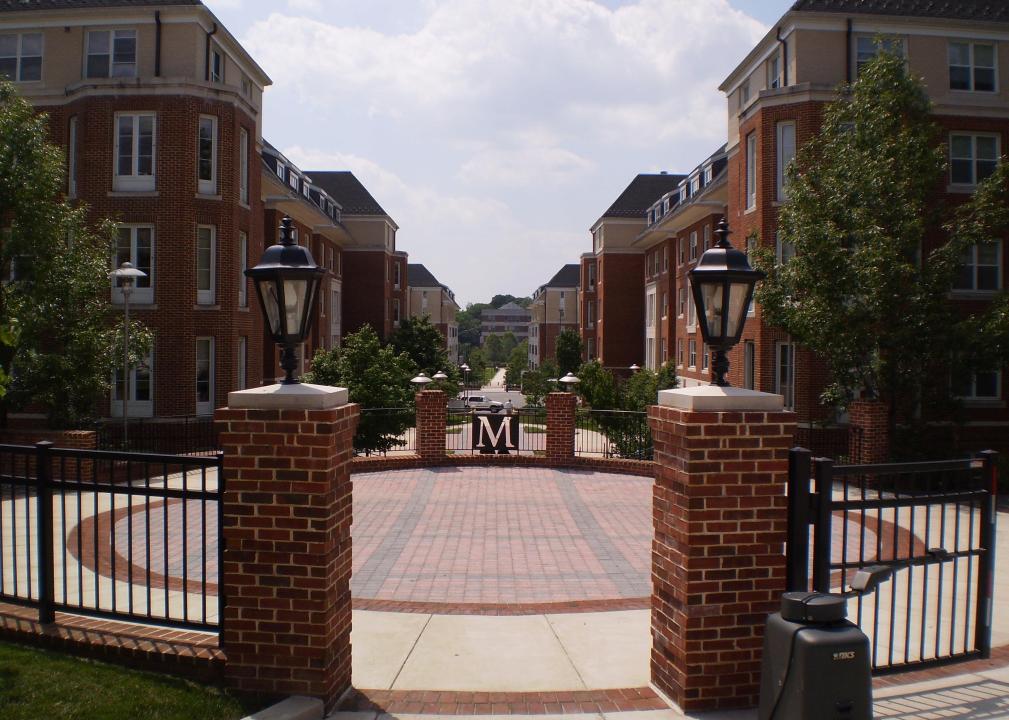
Bgervais // Wikimedia Commons
#2. Maryland
– Number of borrowers: 864,700
– Average loan balance per borrower: $42,543
Only Washington D.C. has an average loan balance per borrower higher than Maryland. But the state offers a Loan Debt Relief Tax Credit for borrowers who took out at least $20,000 in loans and have at least $5,000 in debt still outstanding.
You may also like: The most conservative public colleges in America
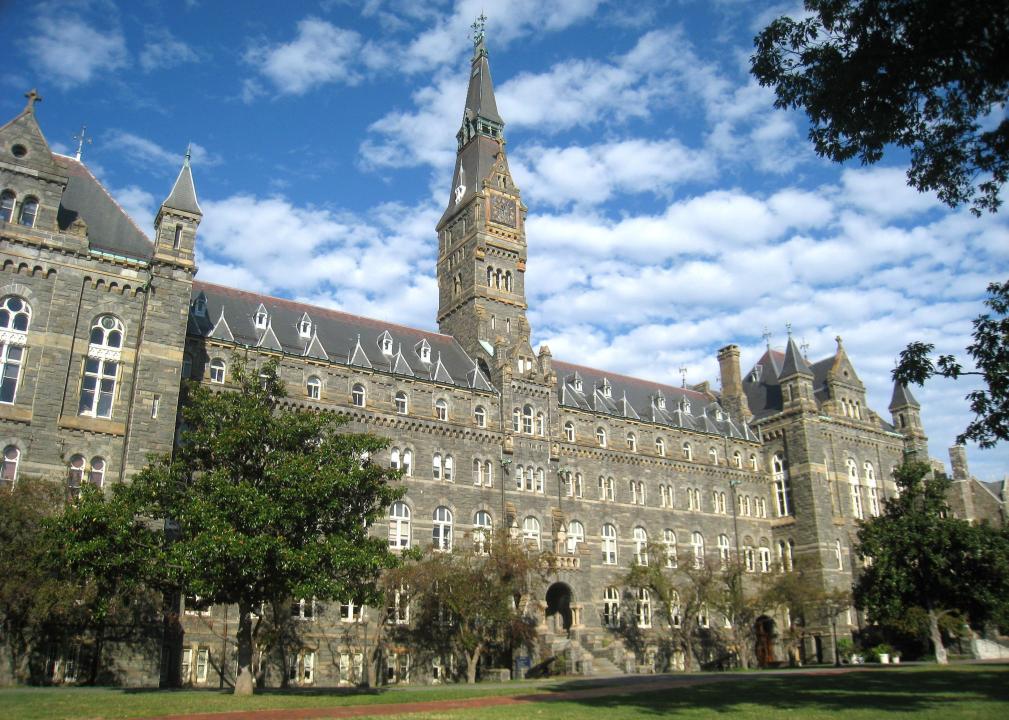
Daderot // Wikimedia Commons
#1. District of Columbia
– Number of borrowers: 125,000
– Average loan balance per borrower: $53,769
The District of Columbia’s ombudsman and its Department of Insurance, Securities, and Banking help students minimize their debt. The district’s attorney general’s office has also compiled a web page of student loan repayment resources. Even so, Washington D.C. borrowers have the highest average loan balance in the country.
You may also like: The most conservative public colleges in America


